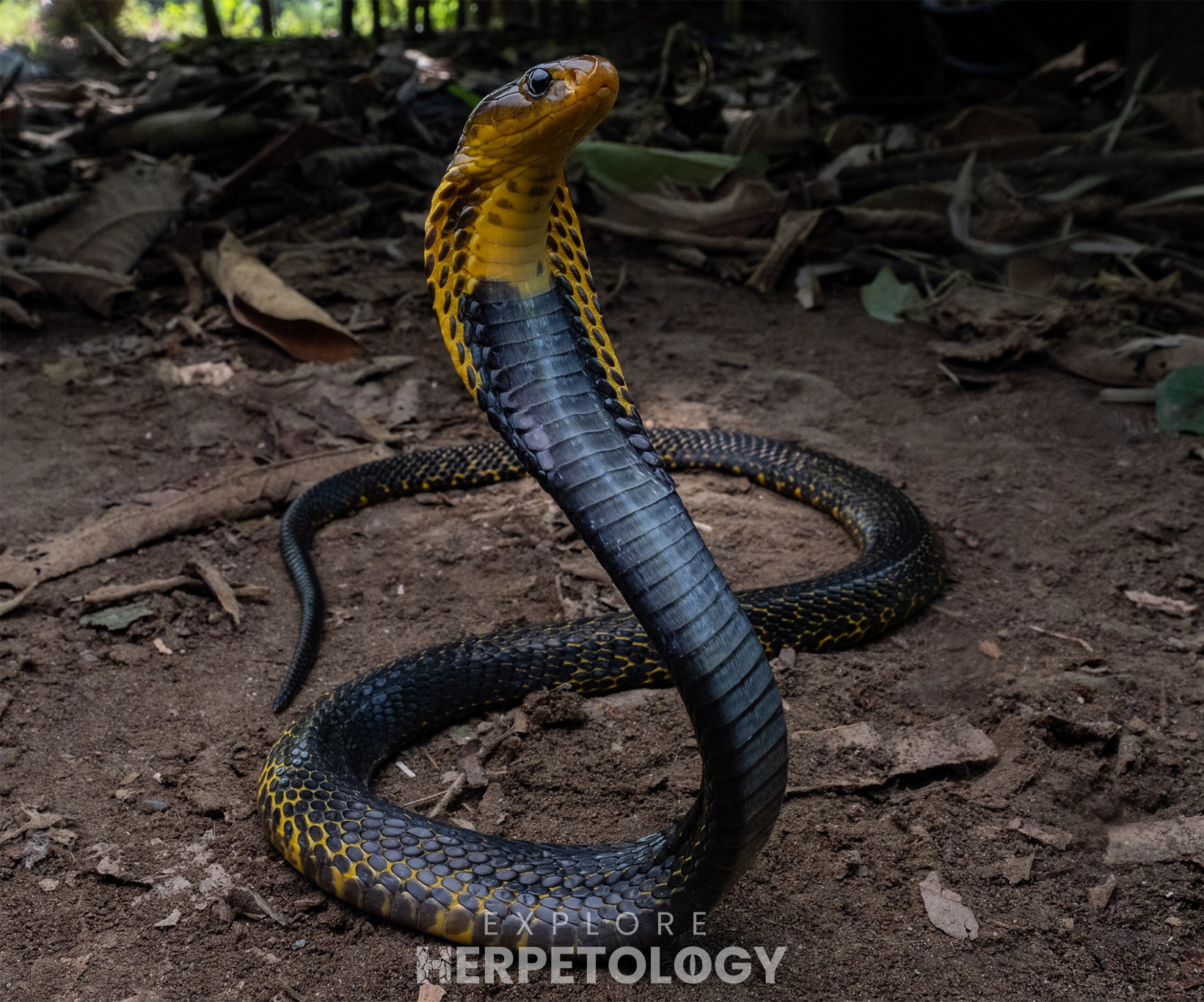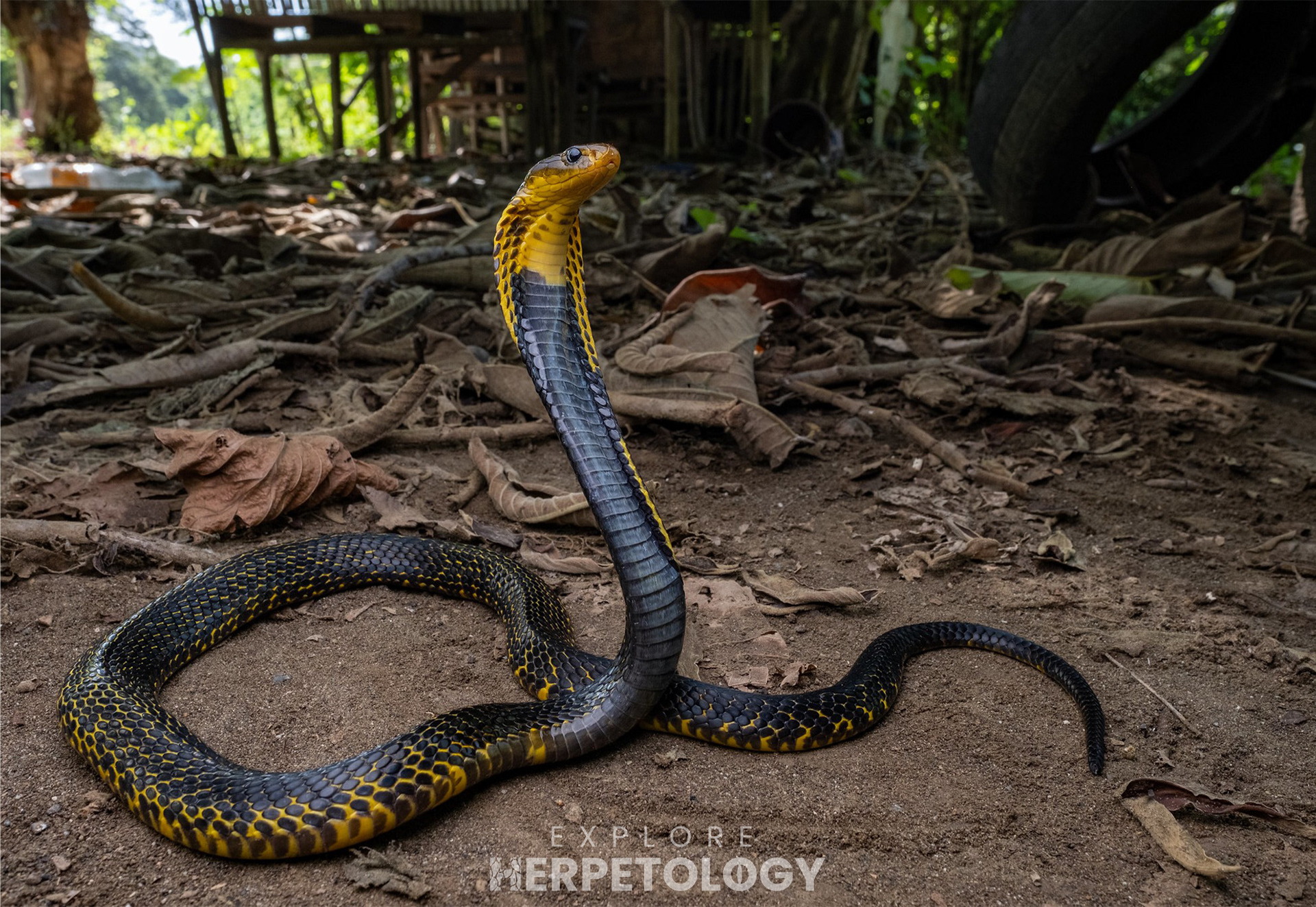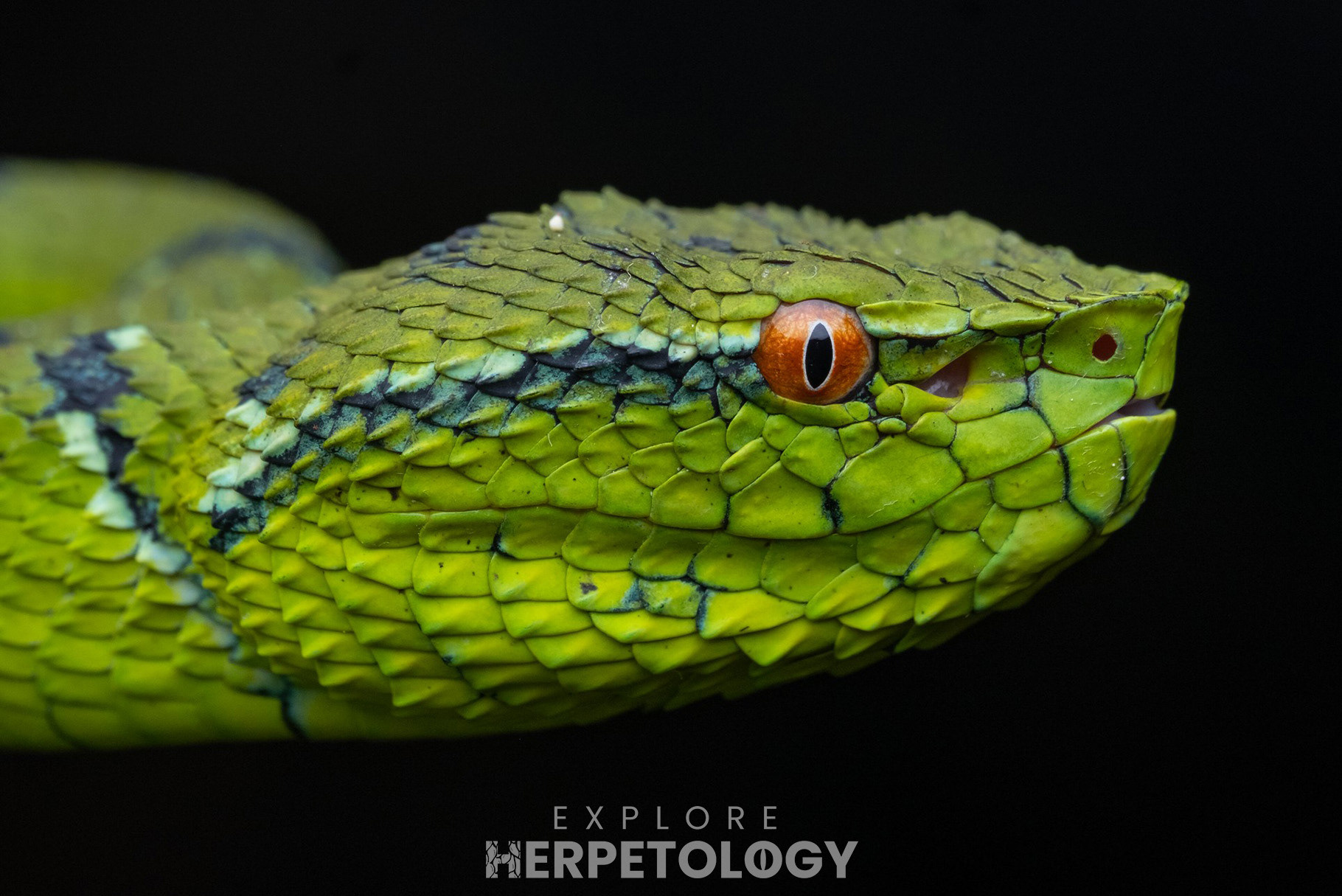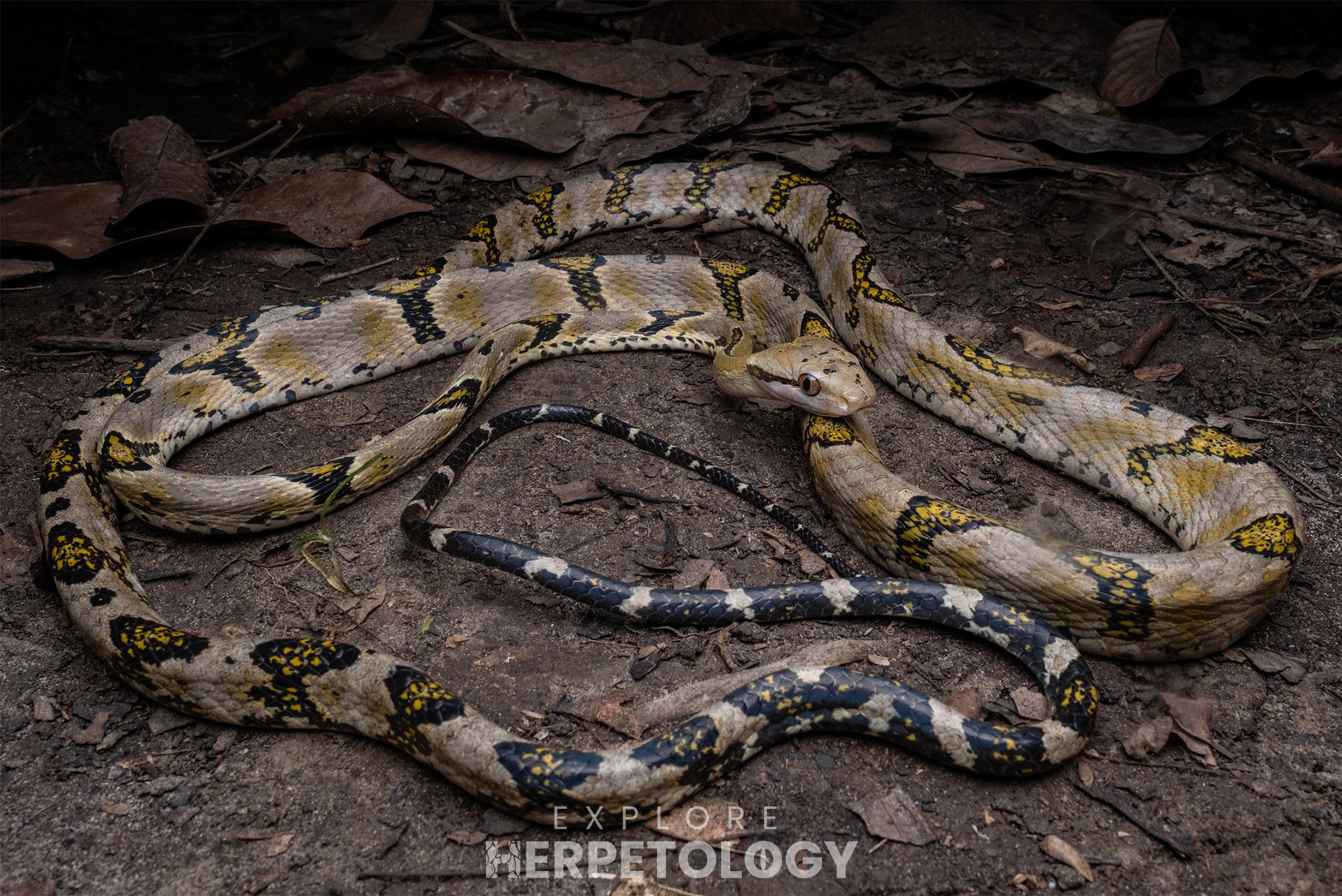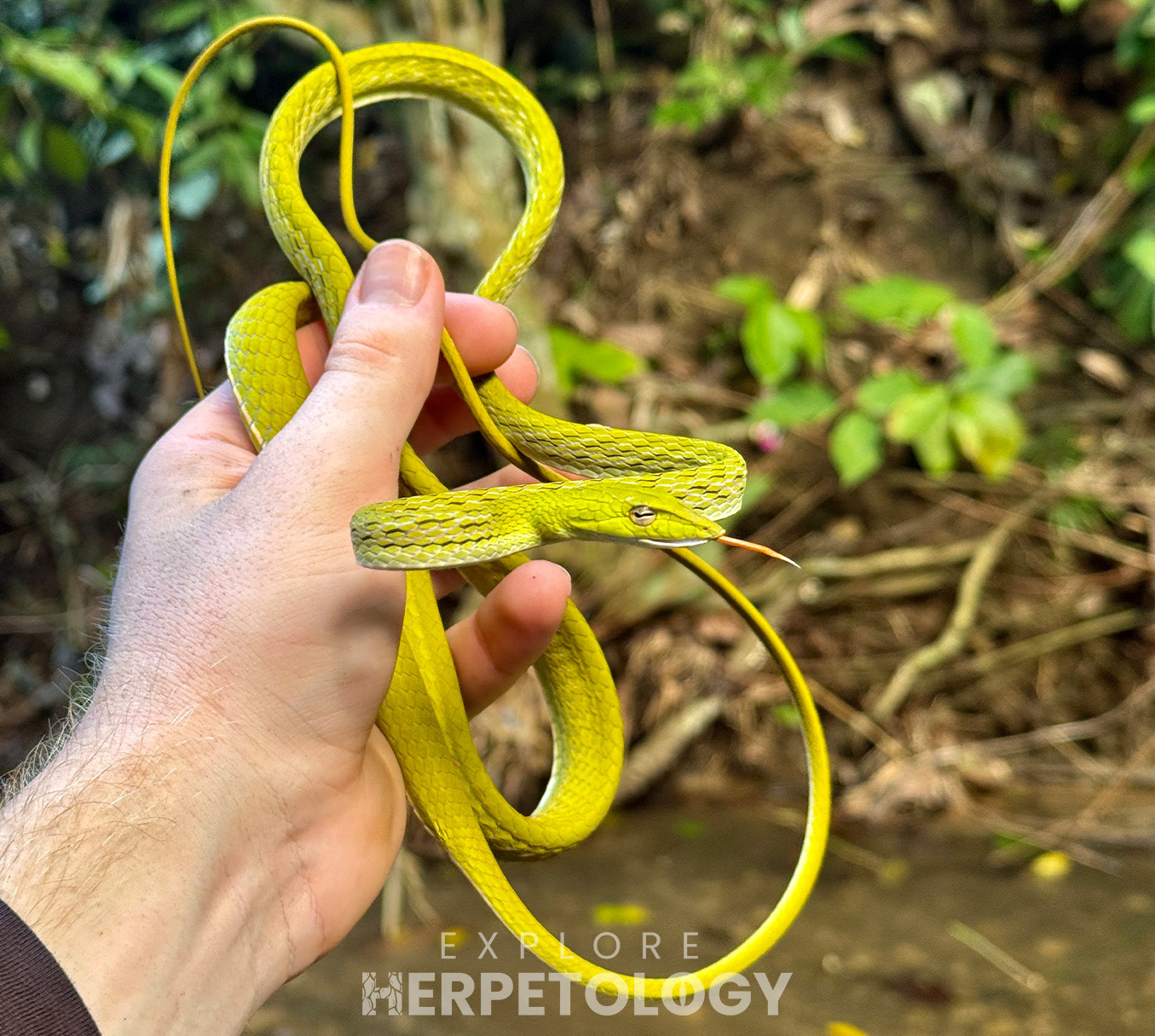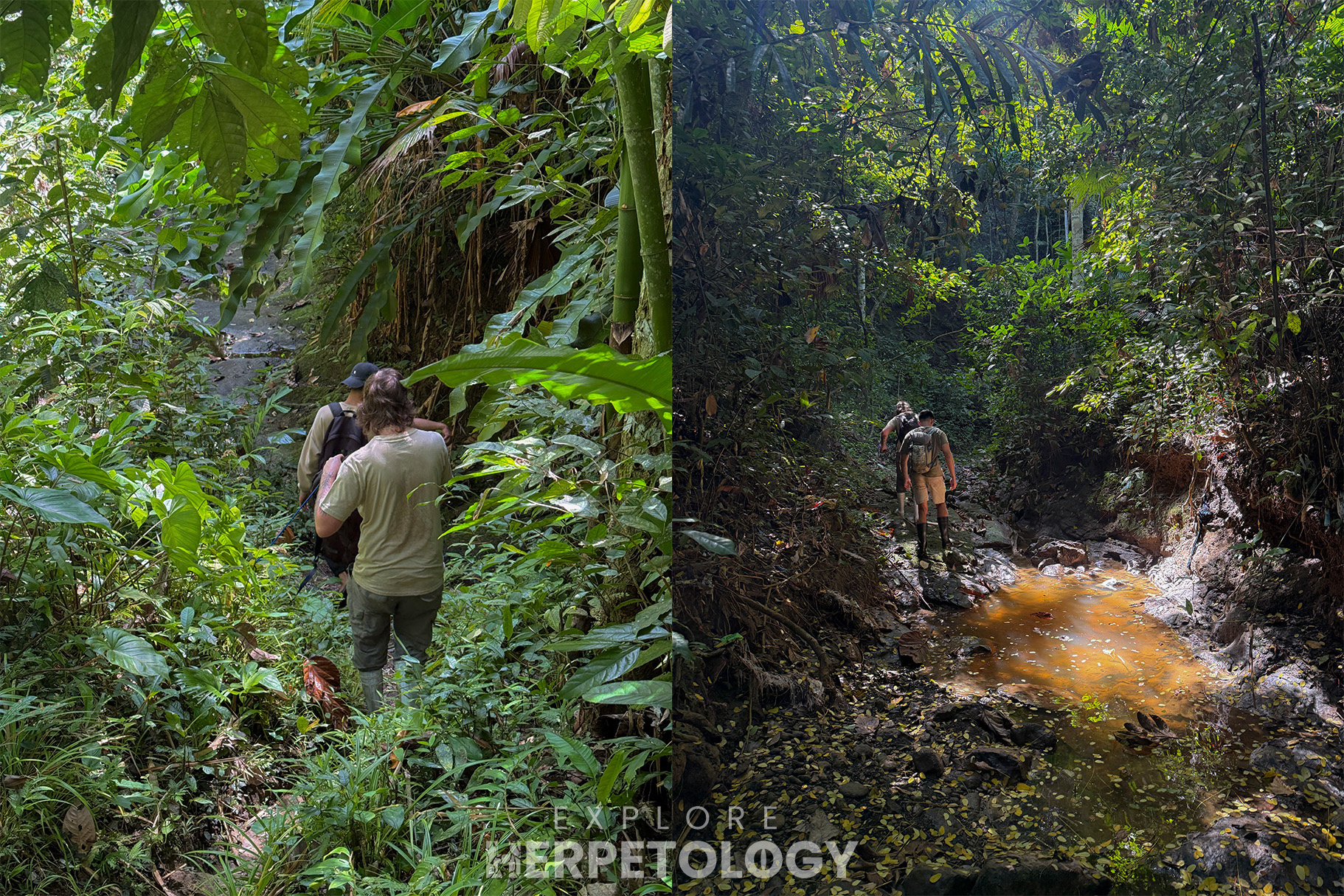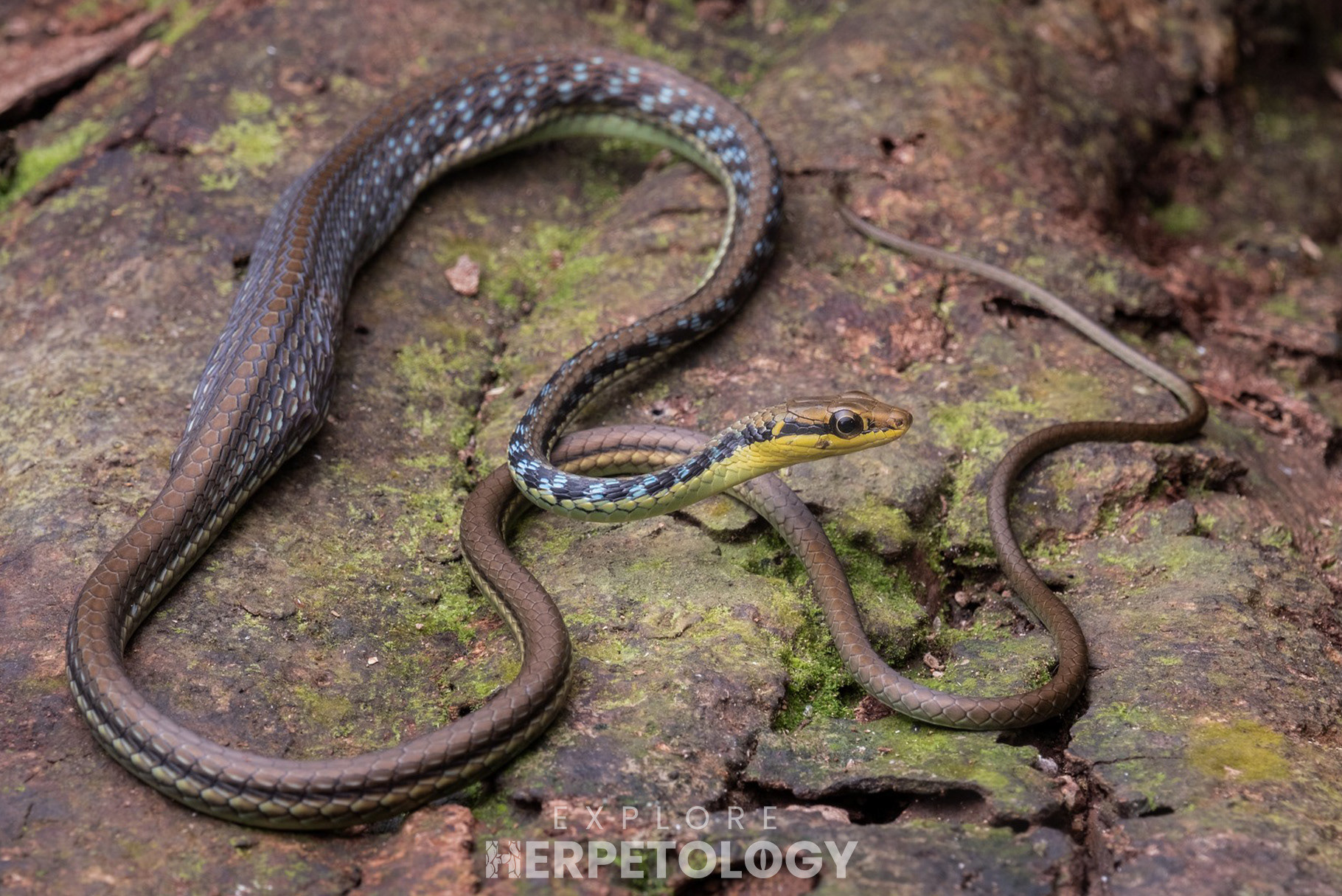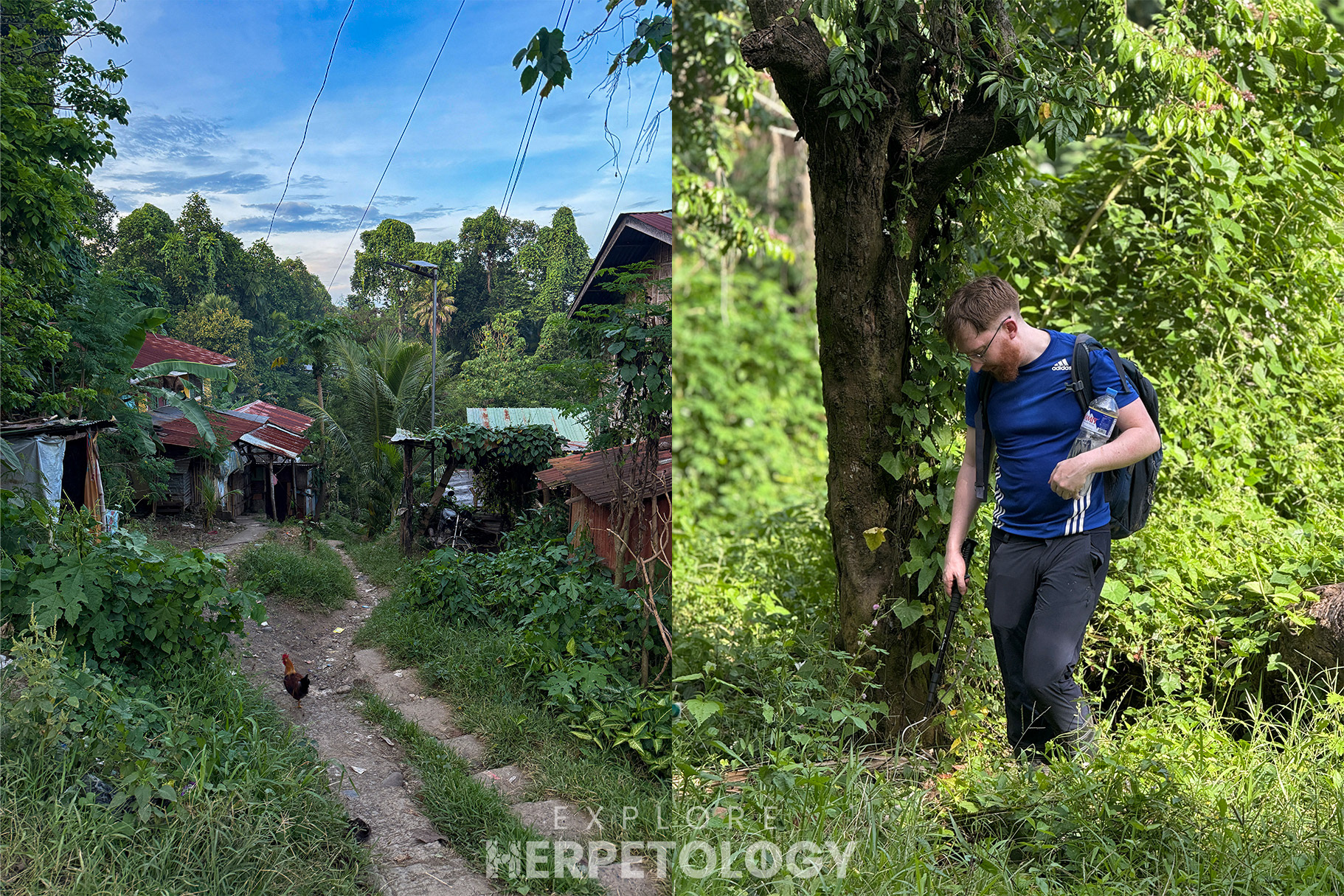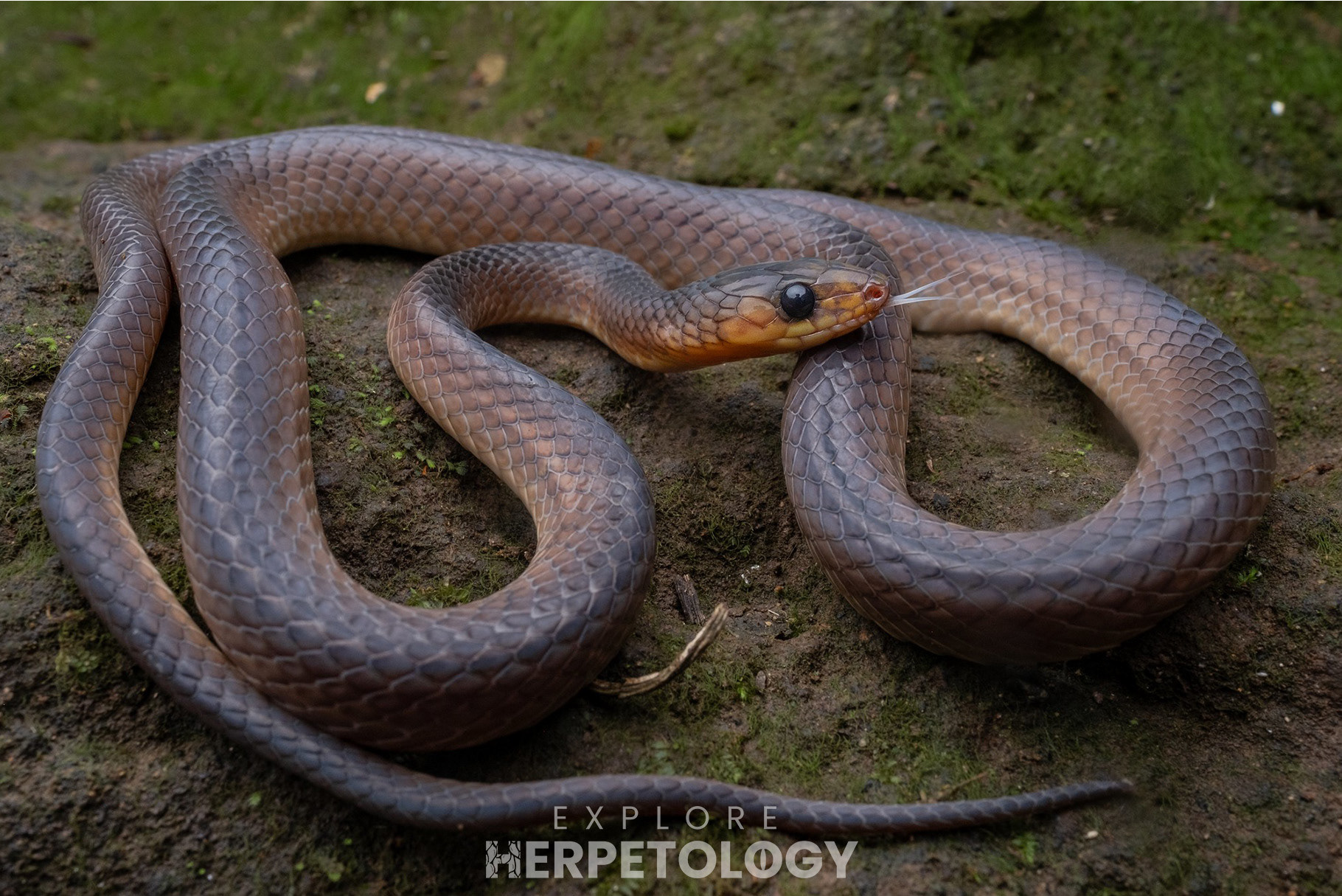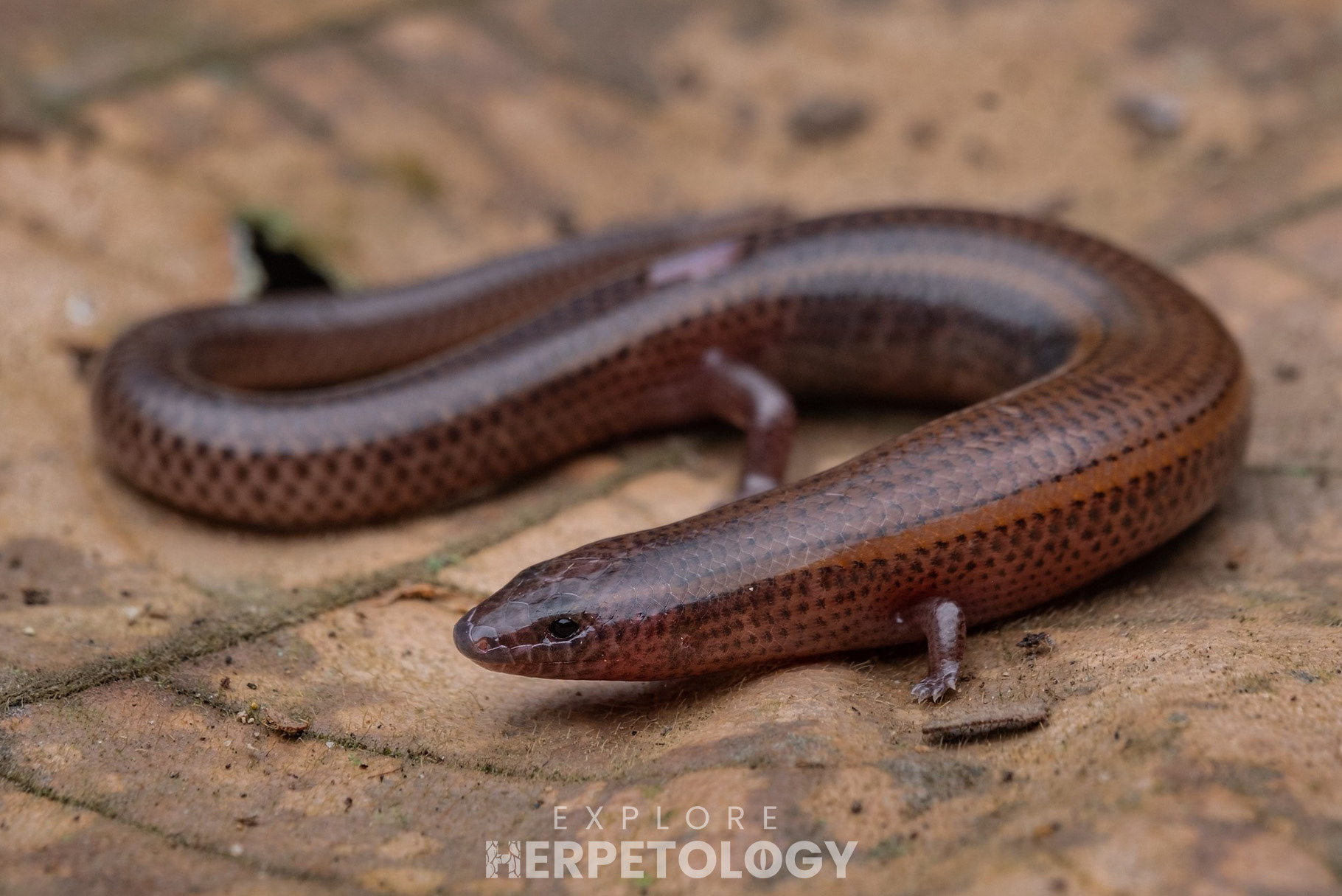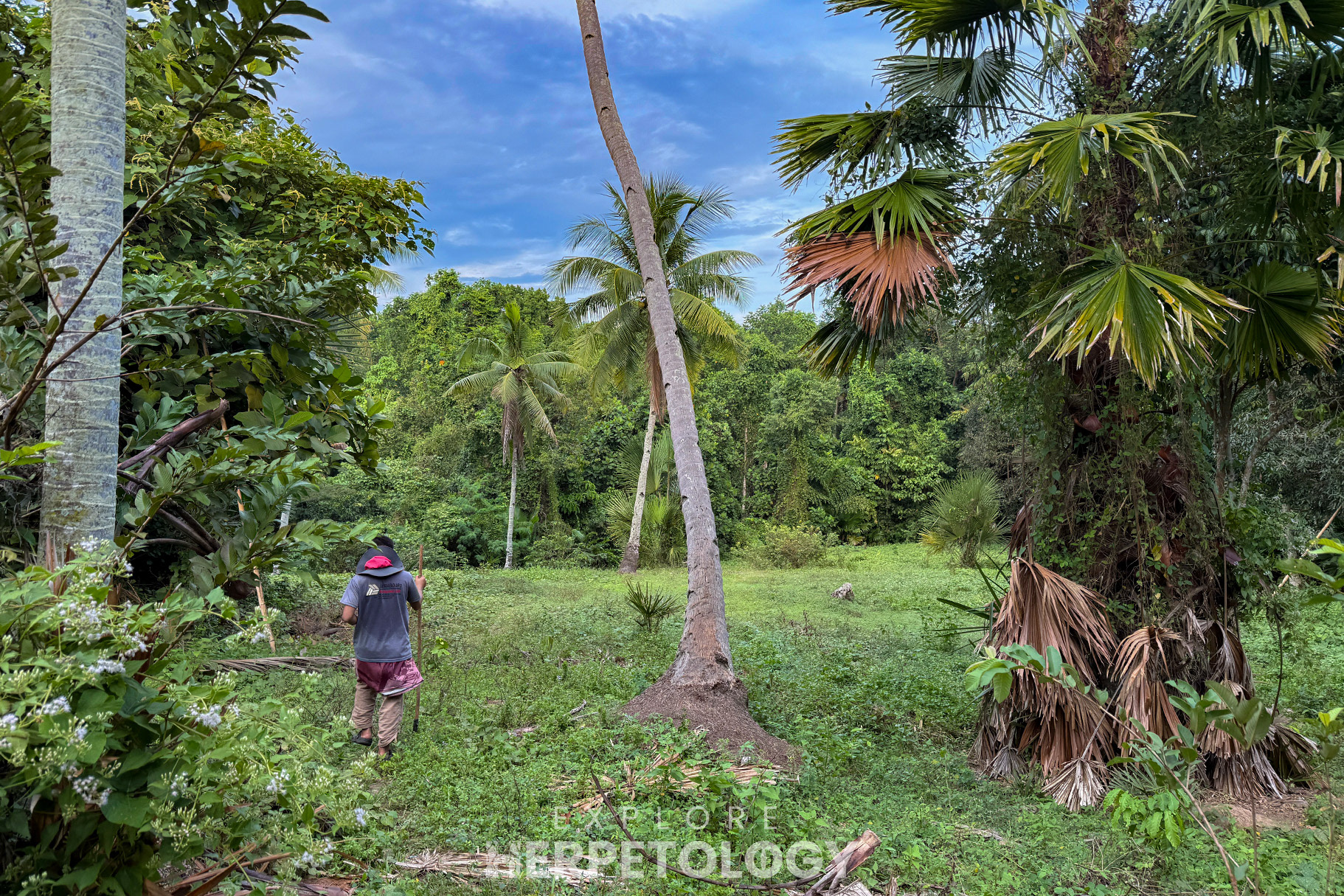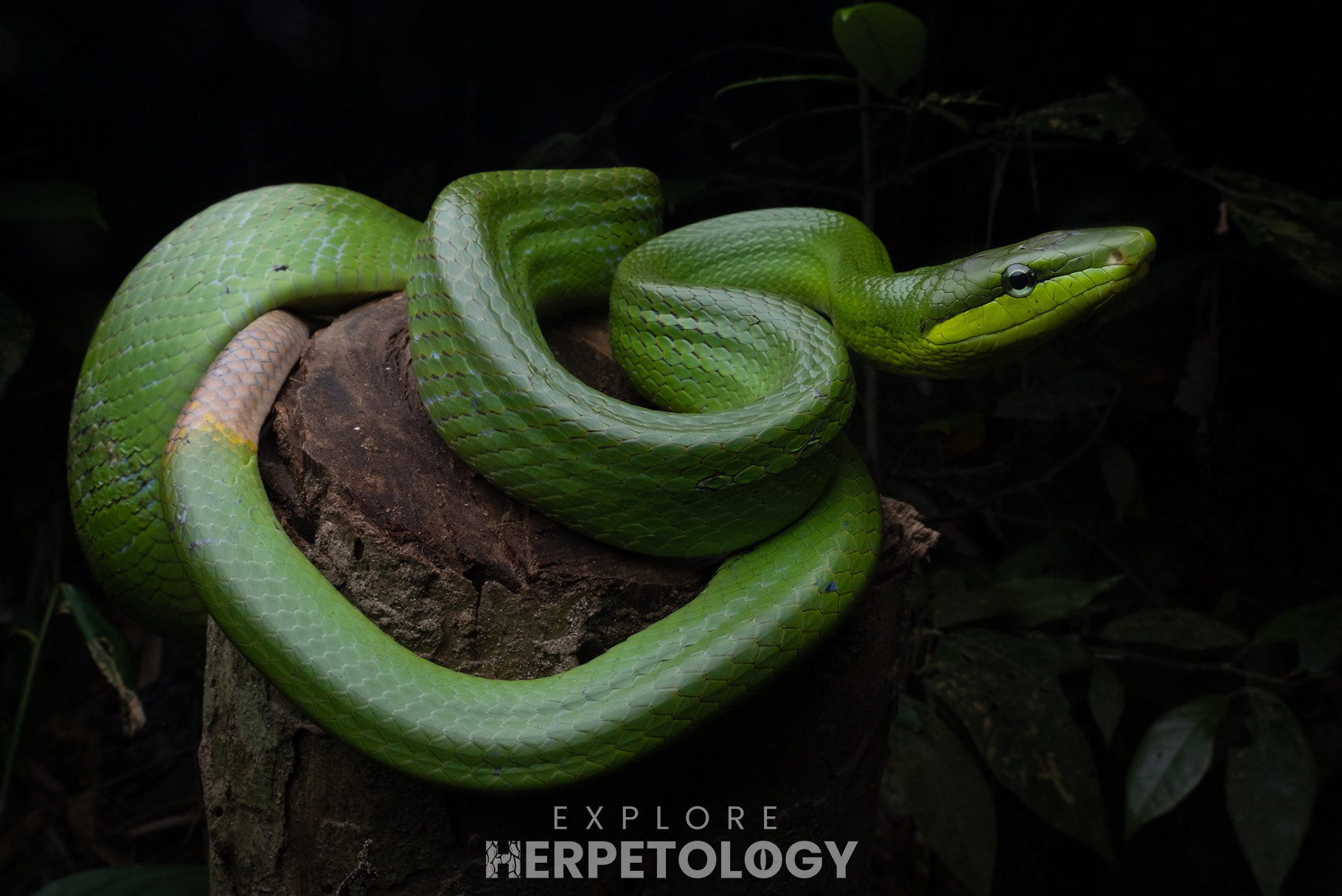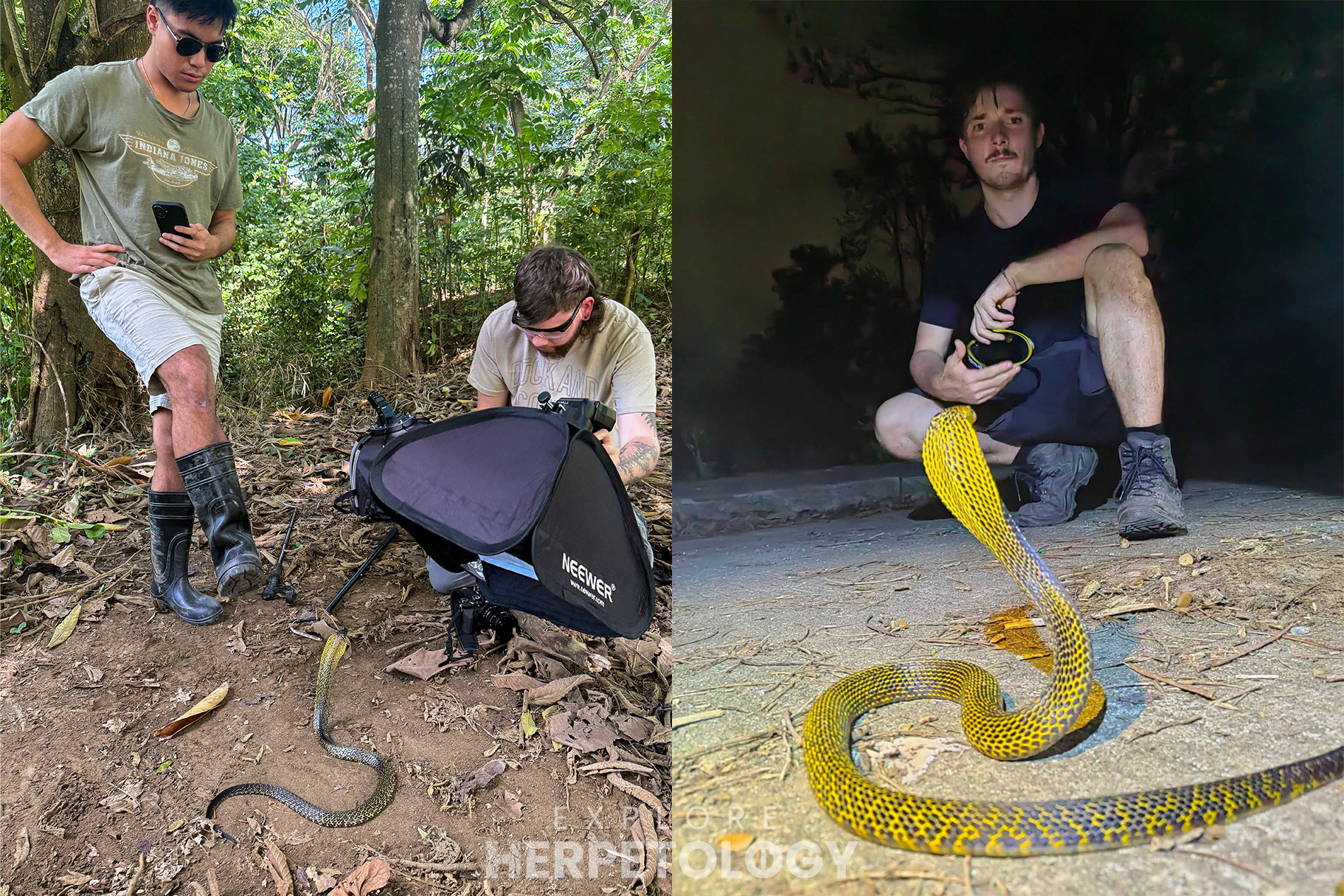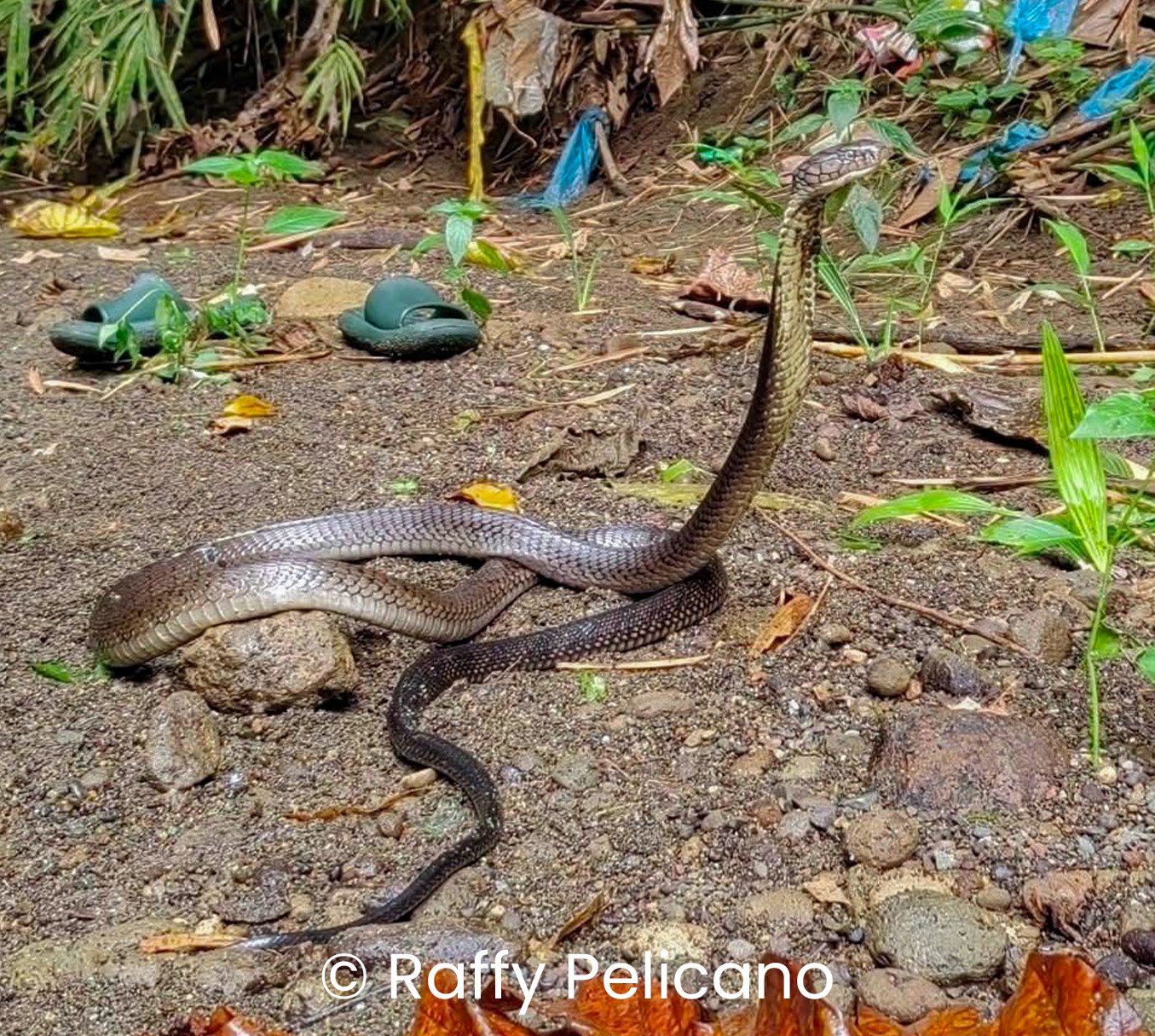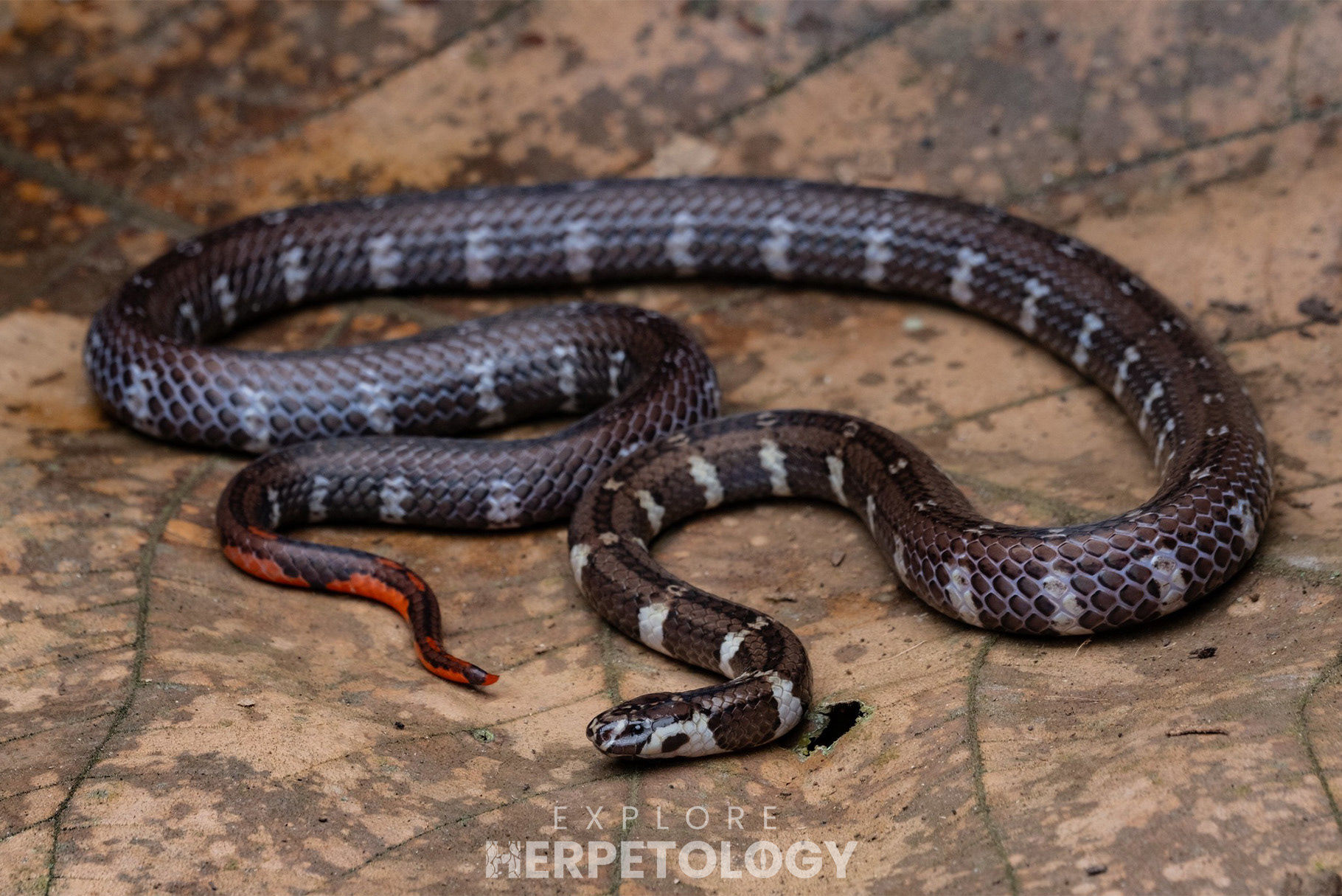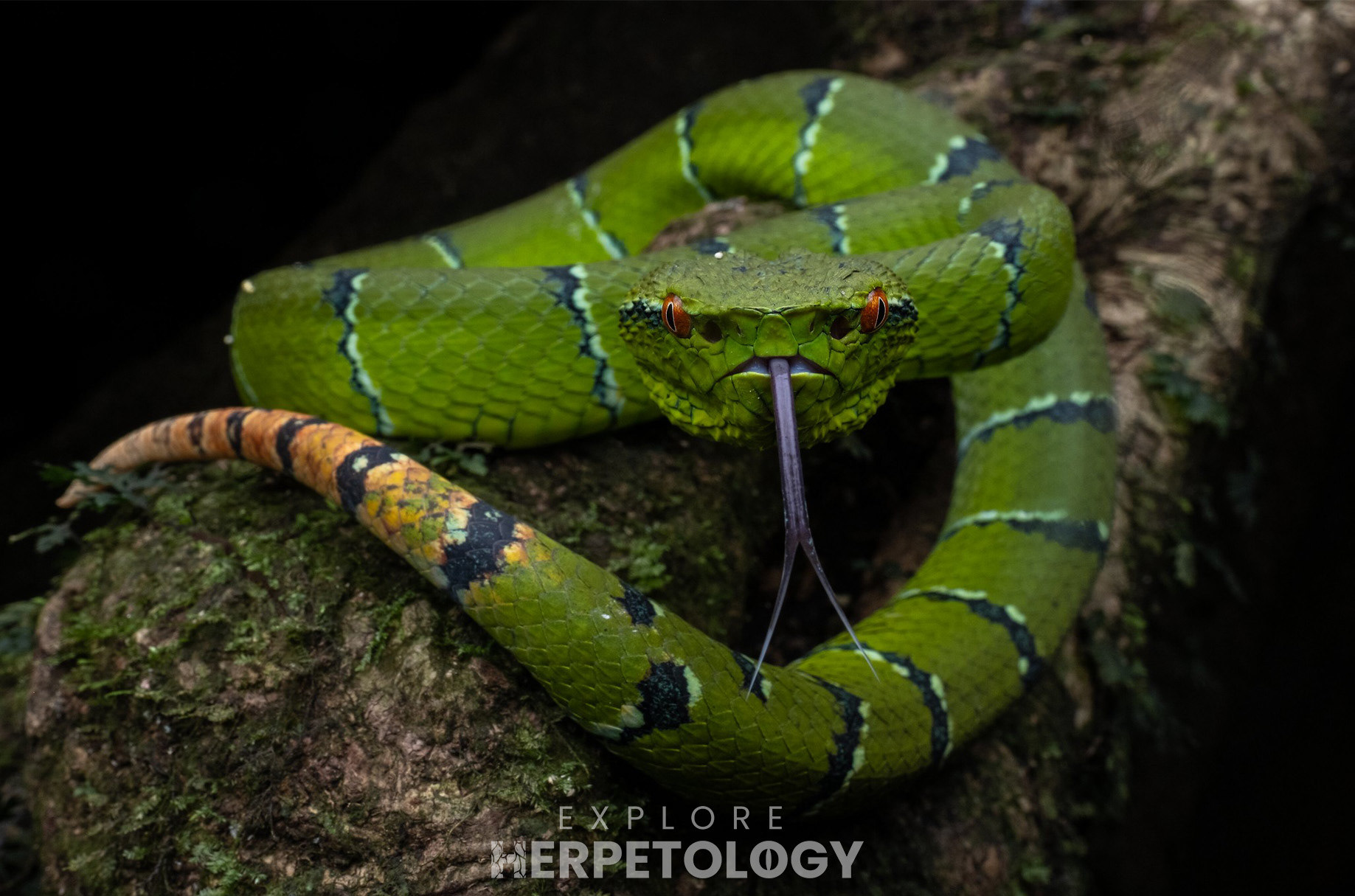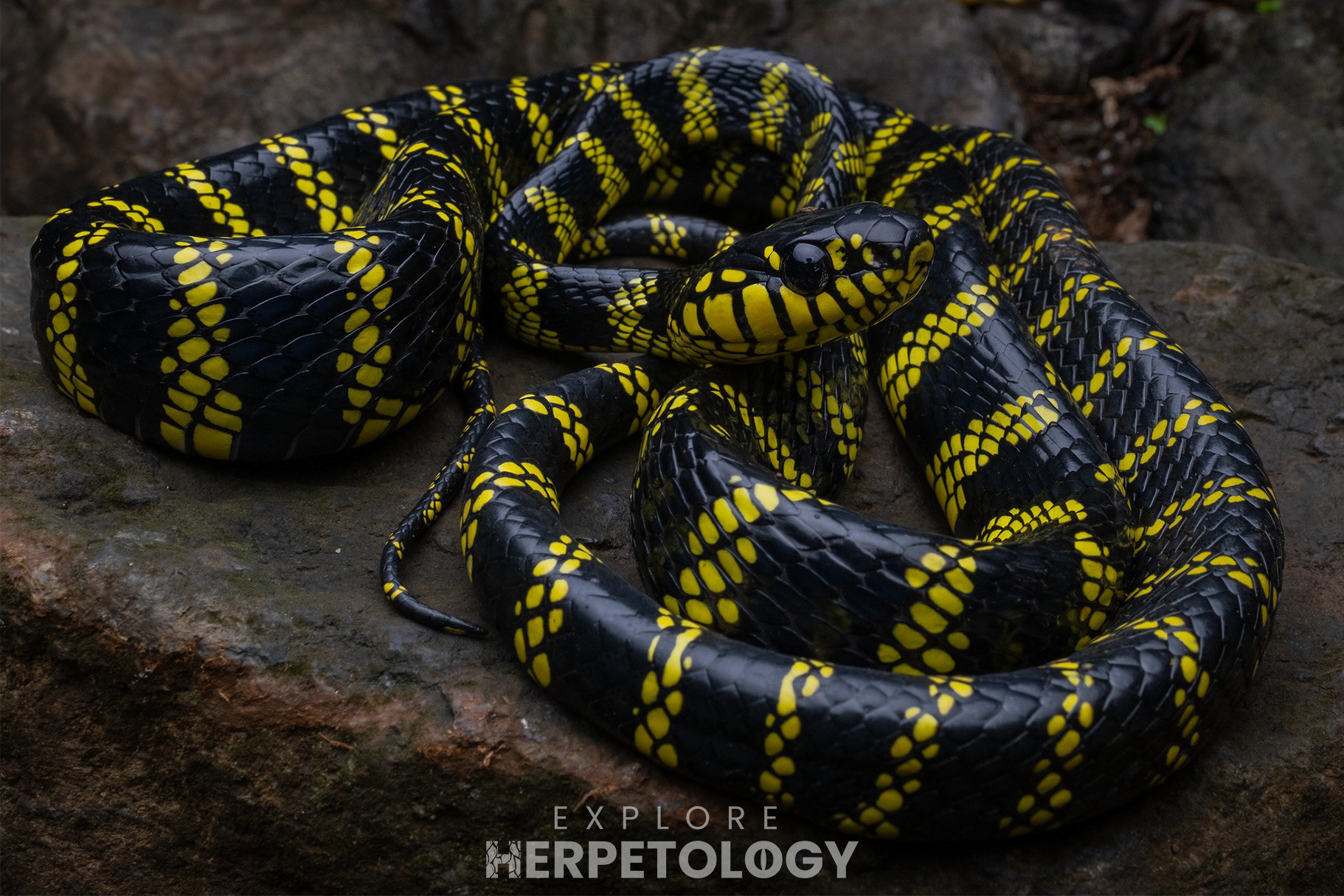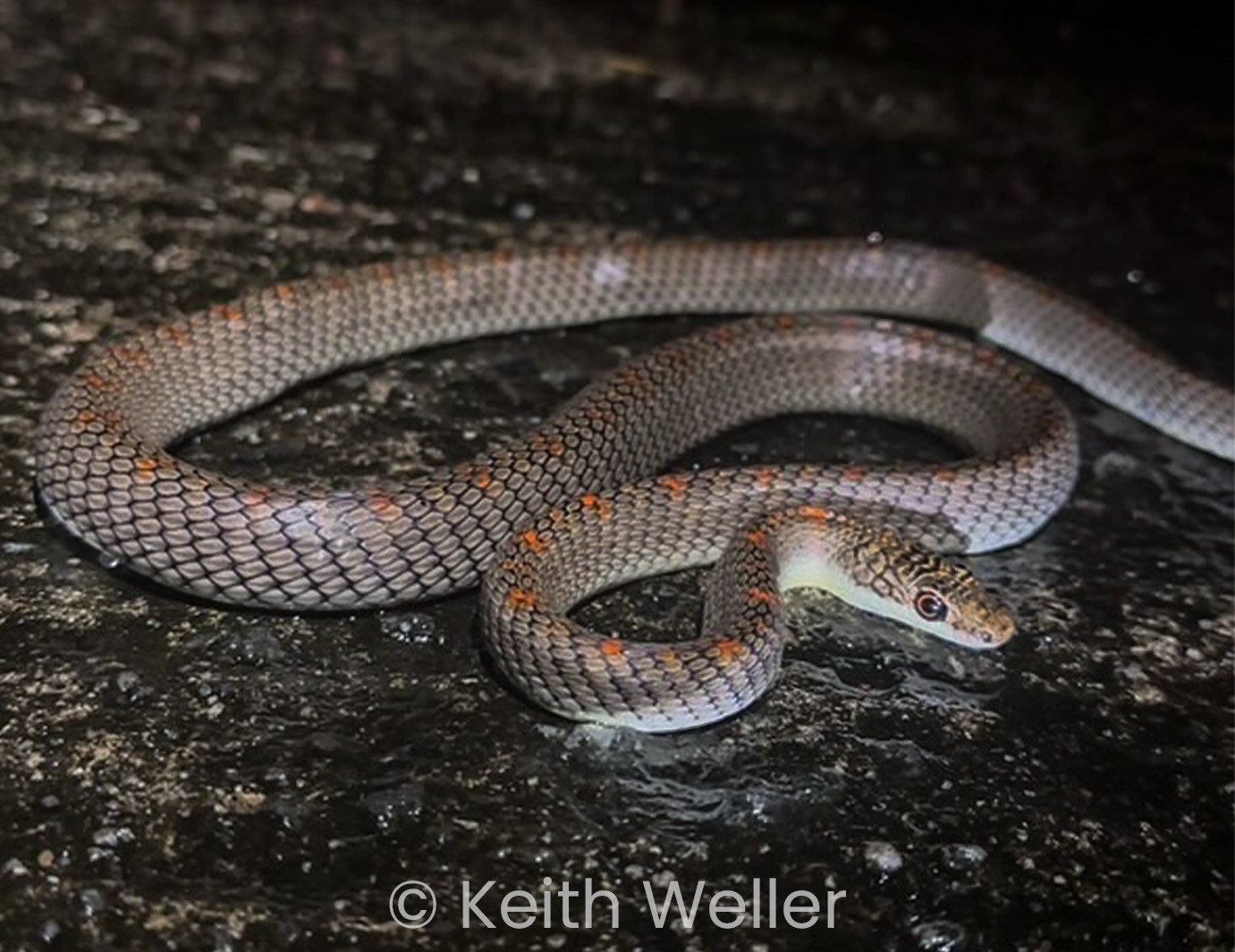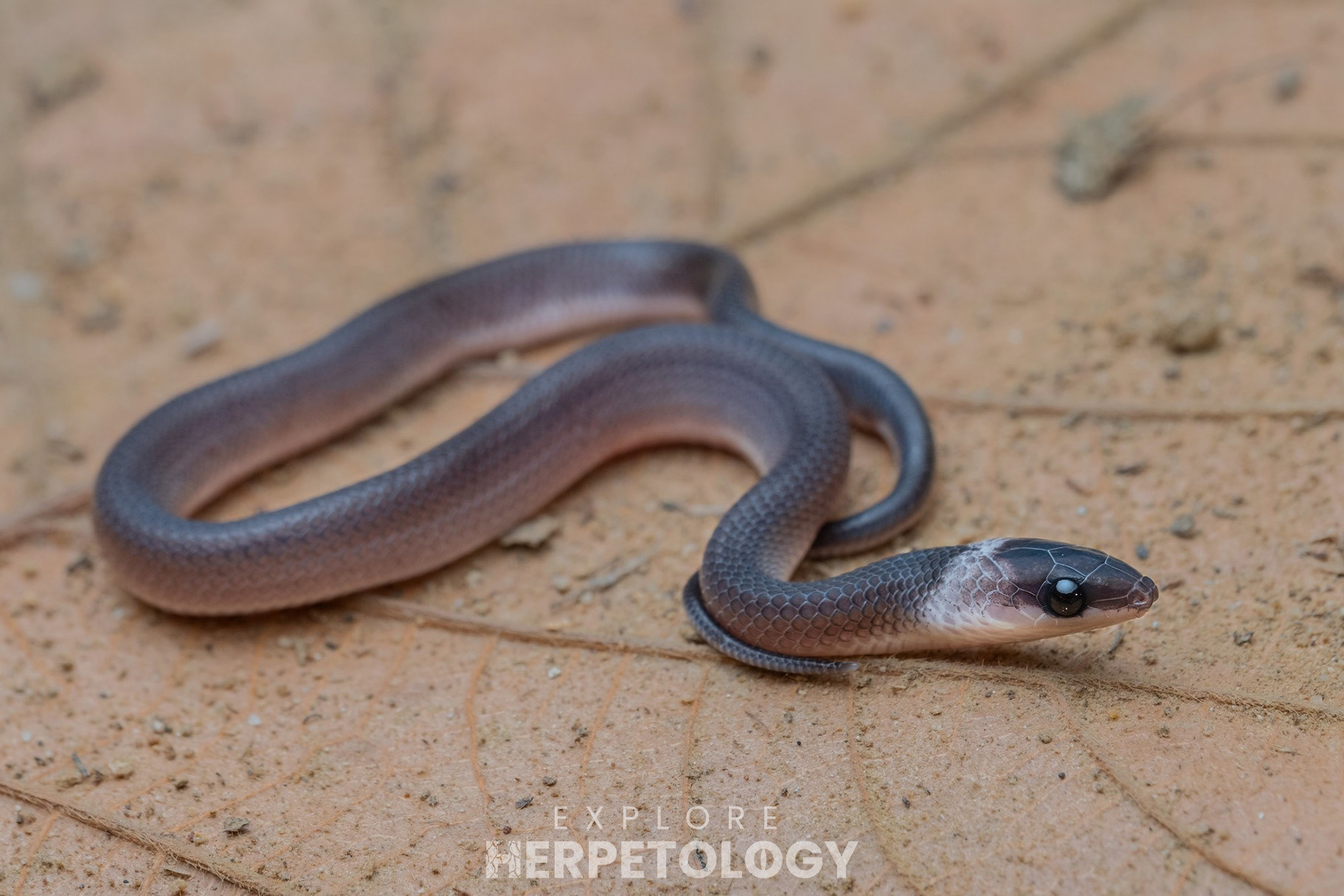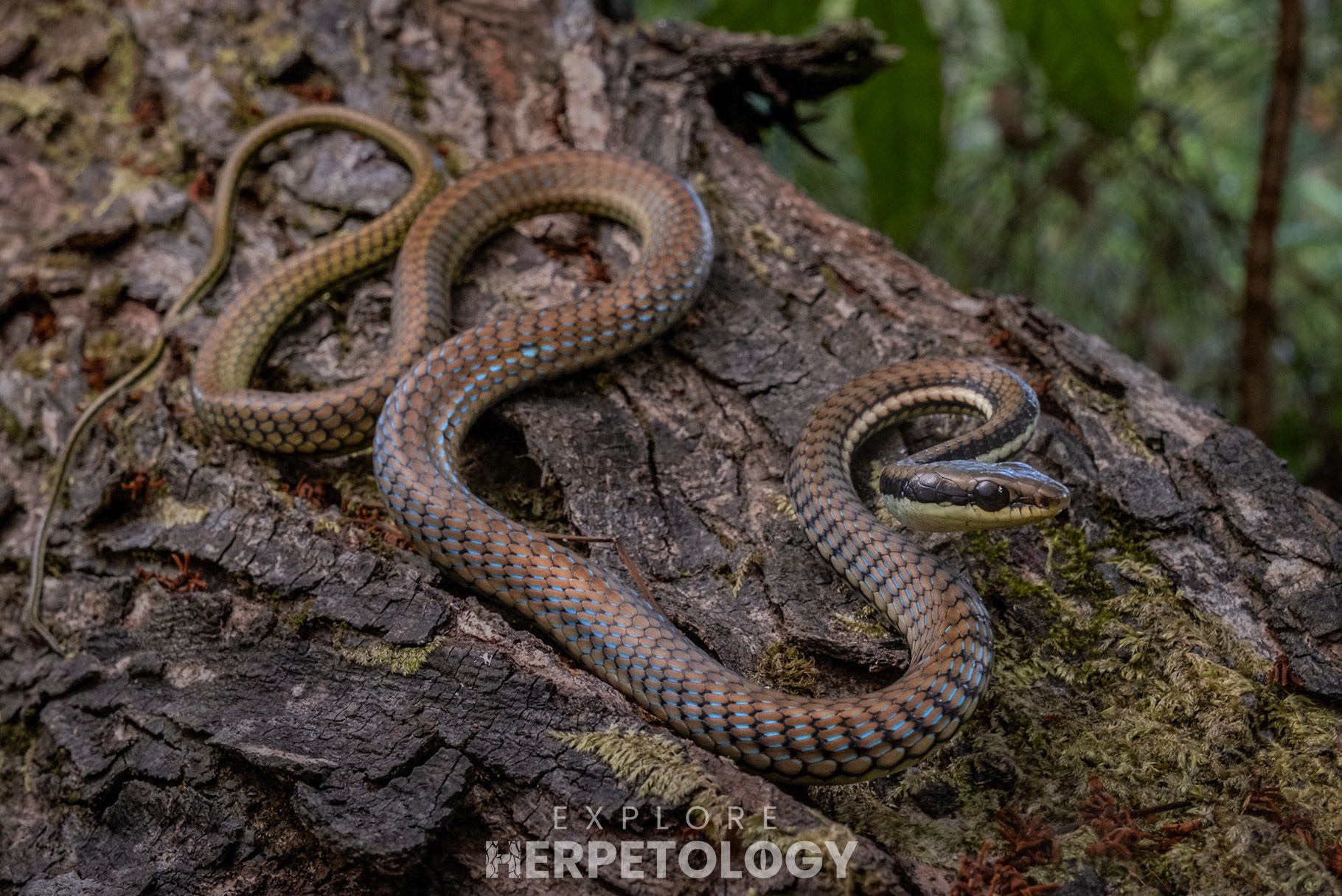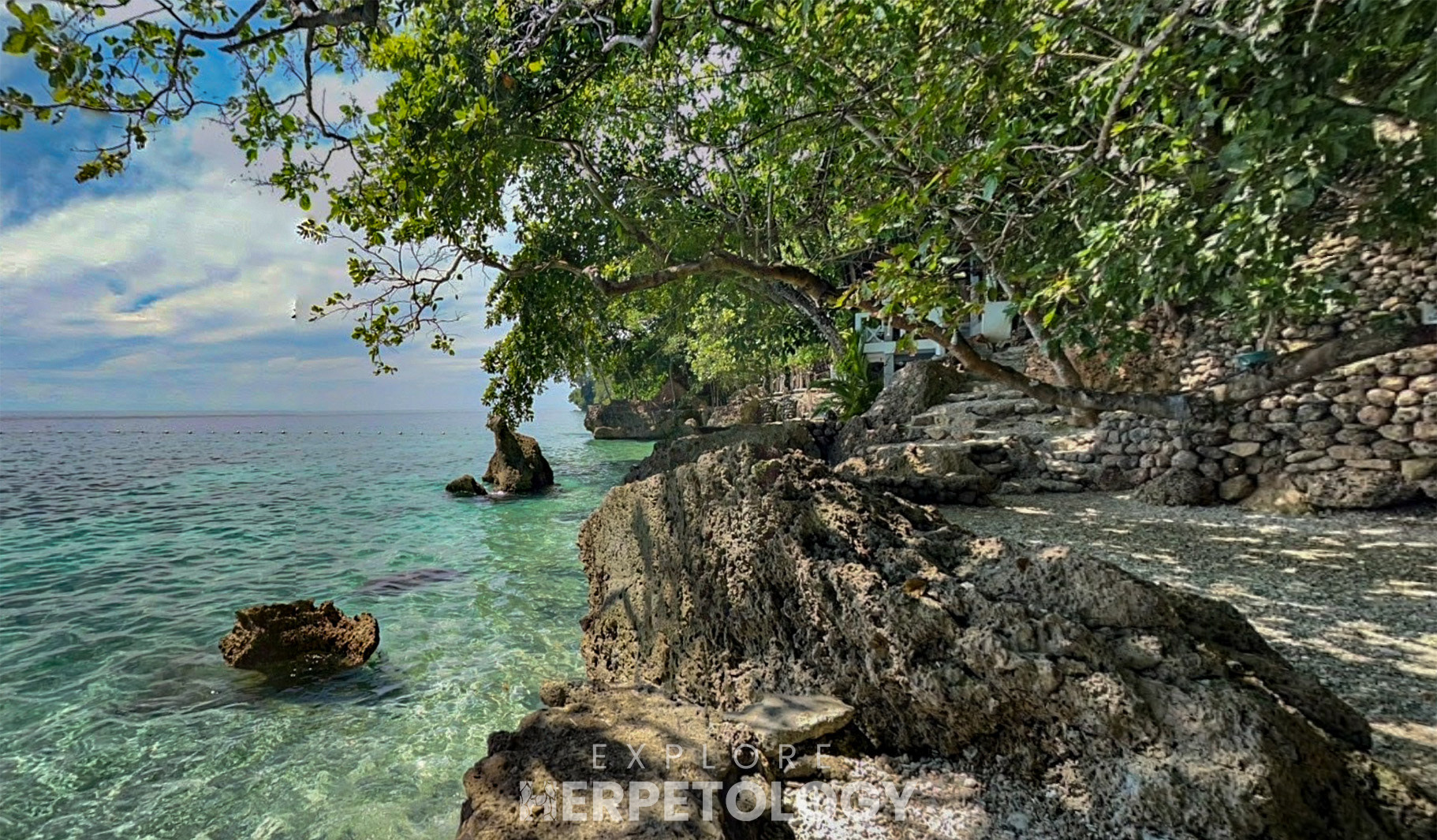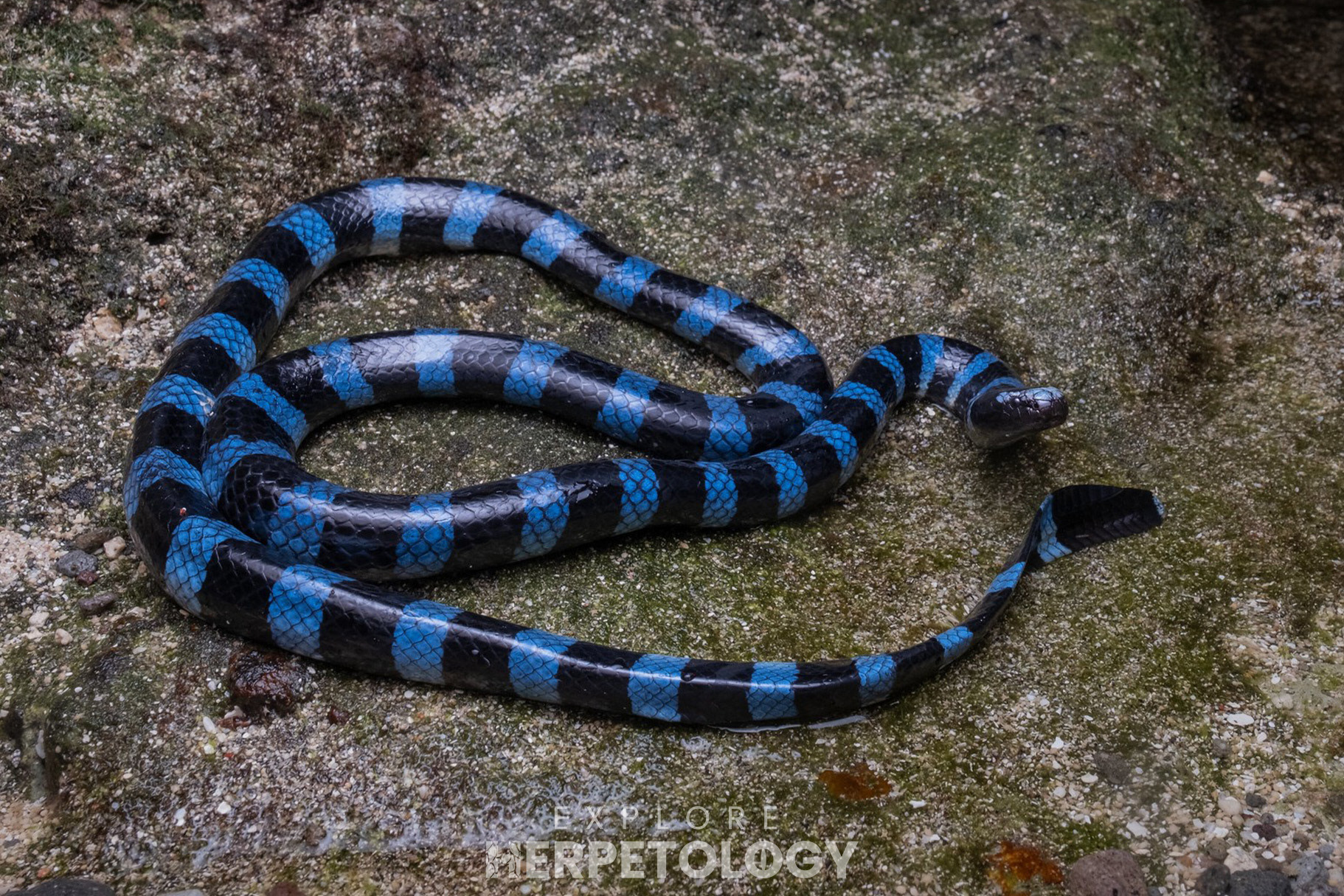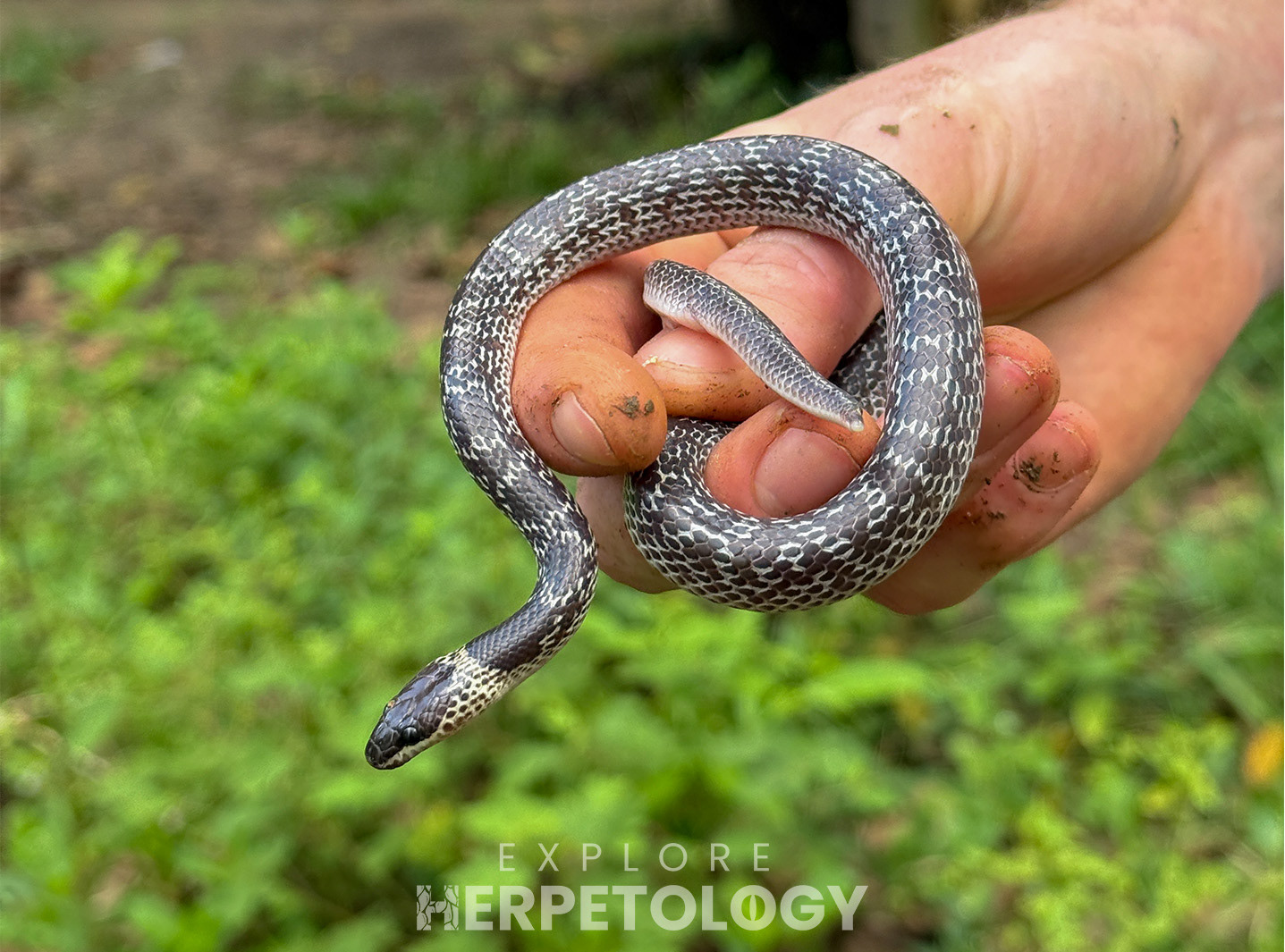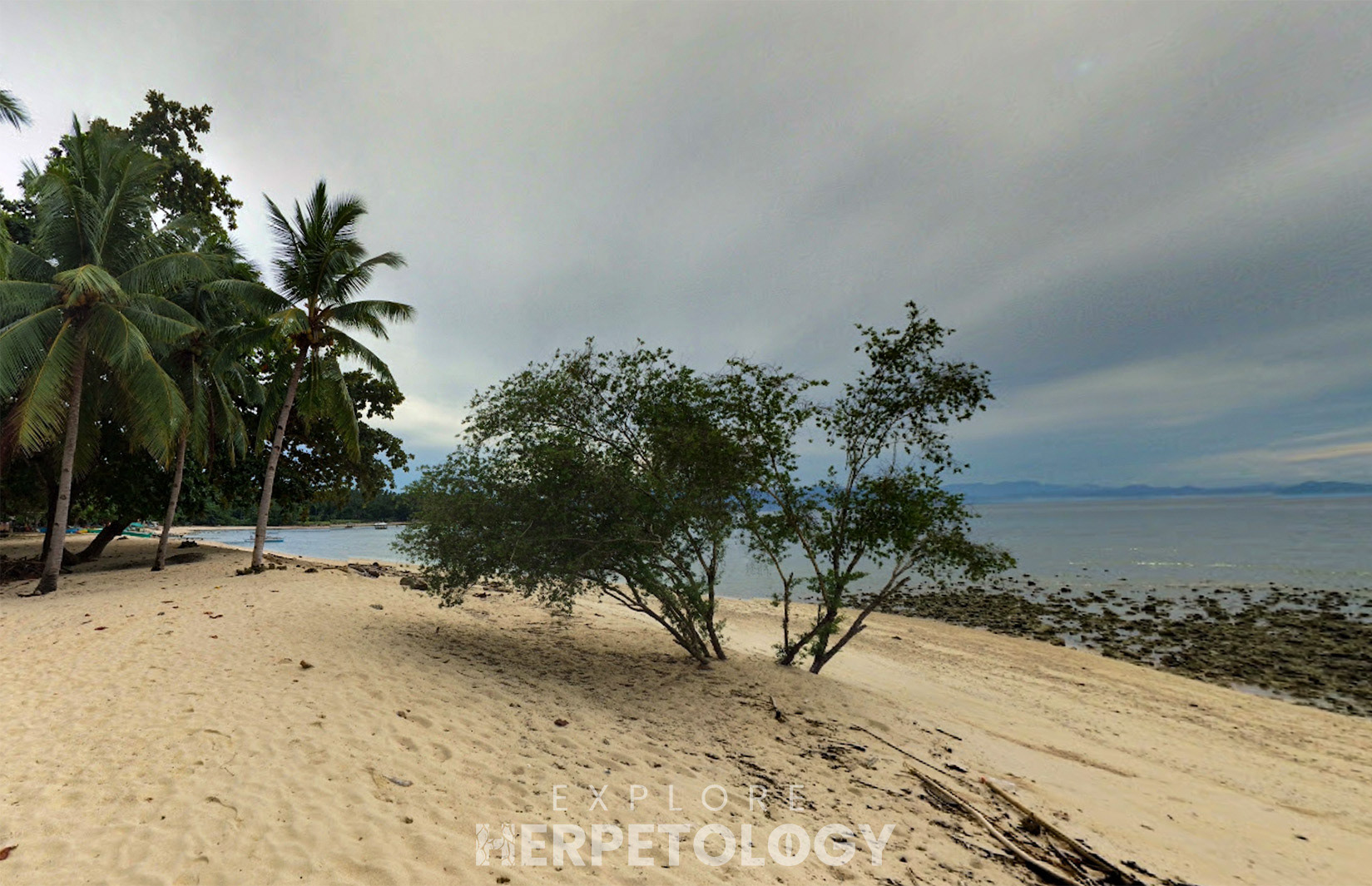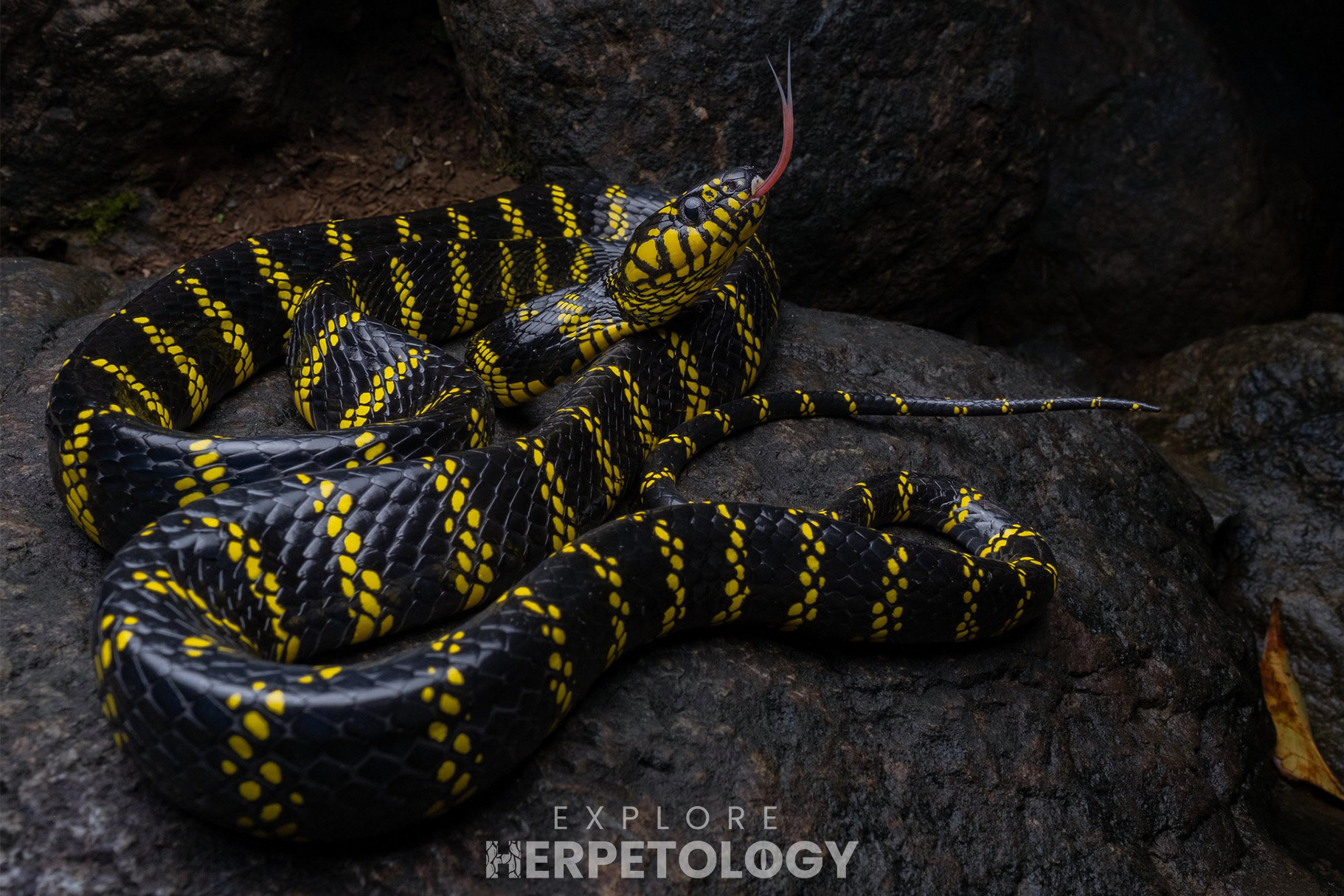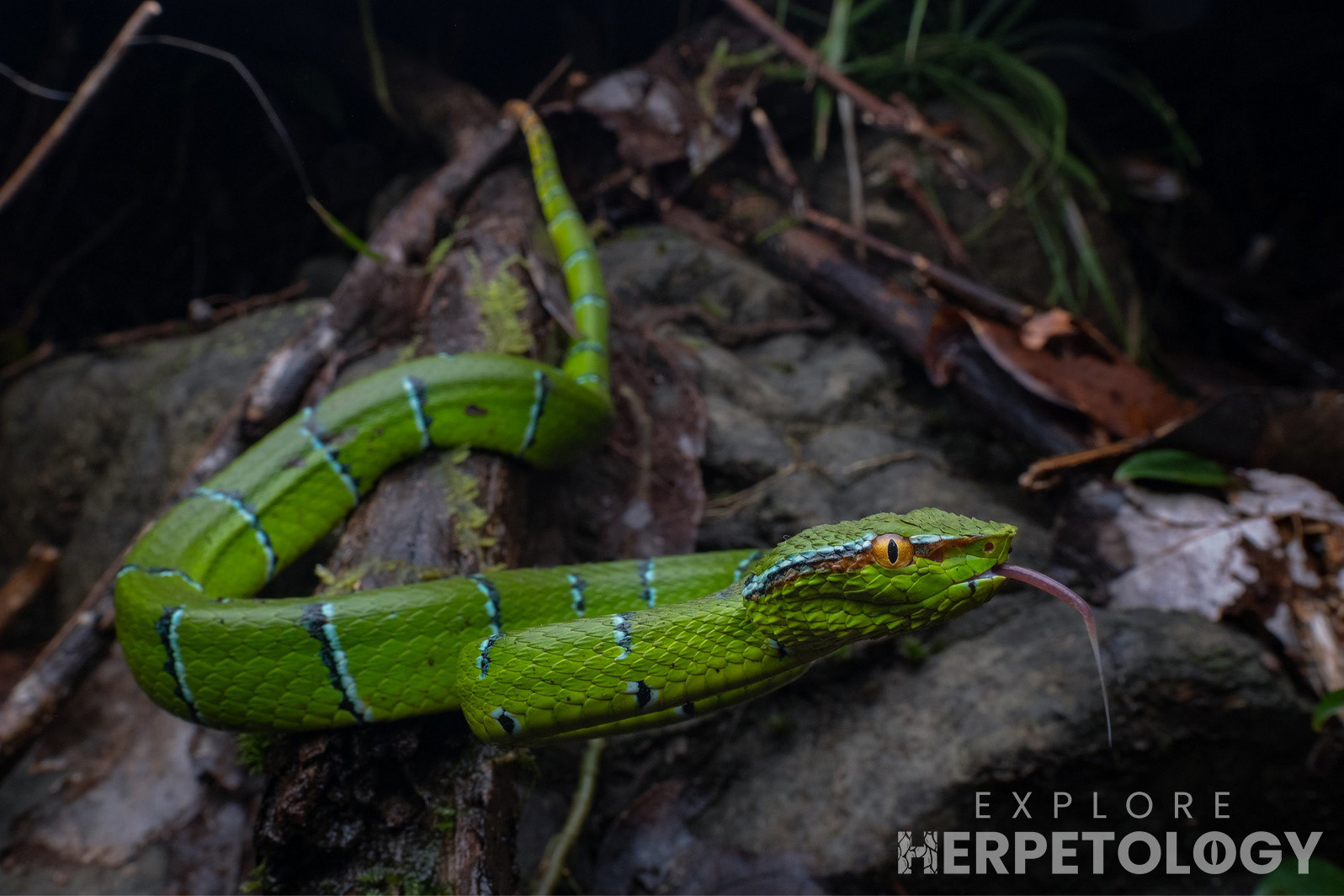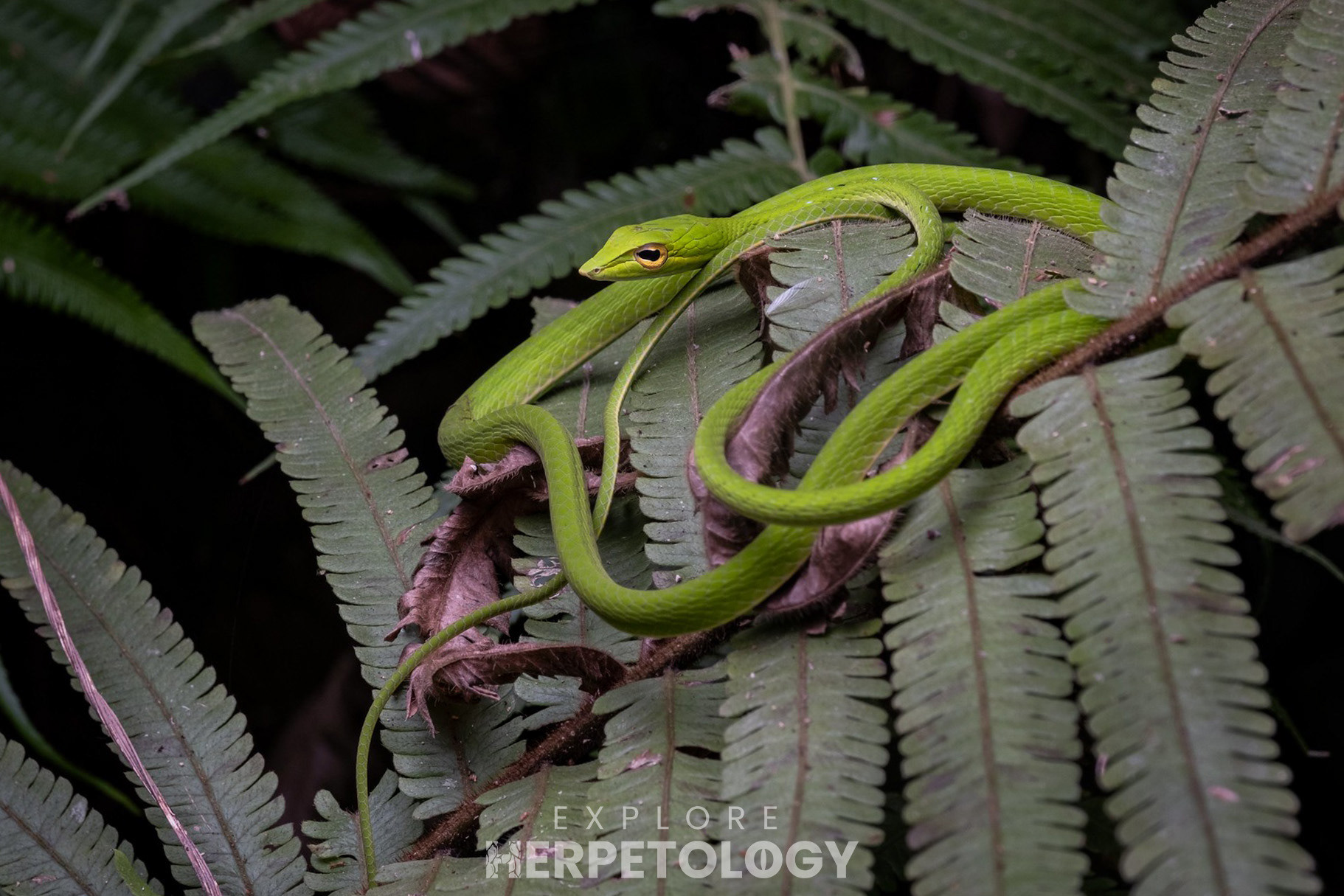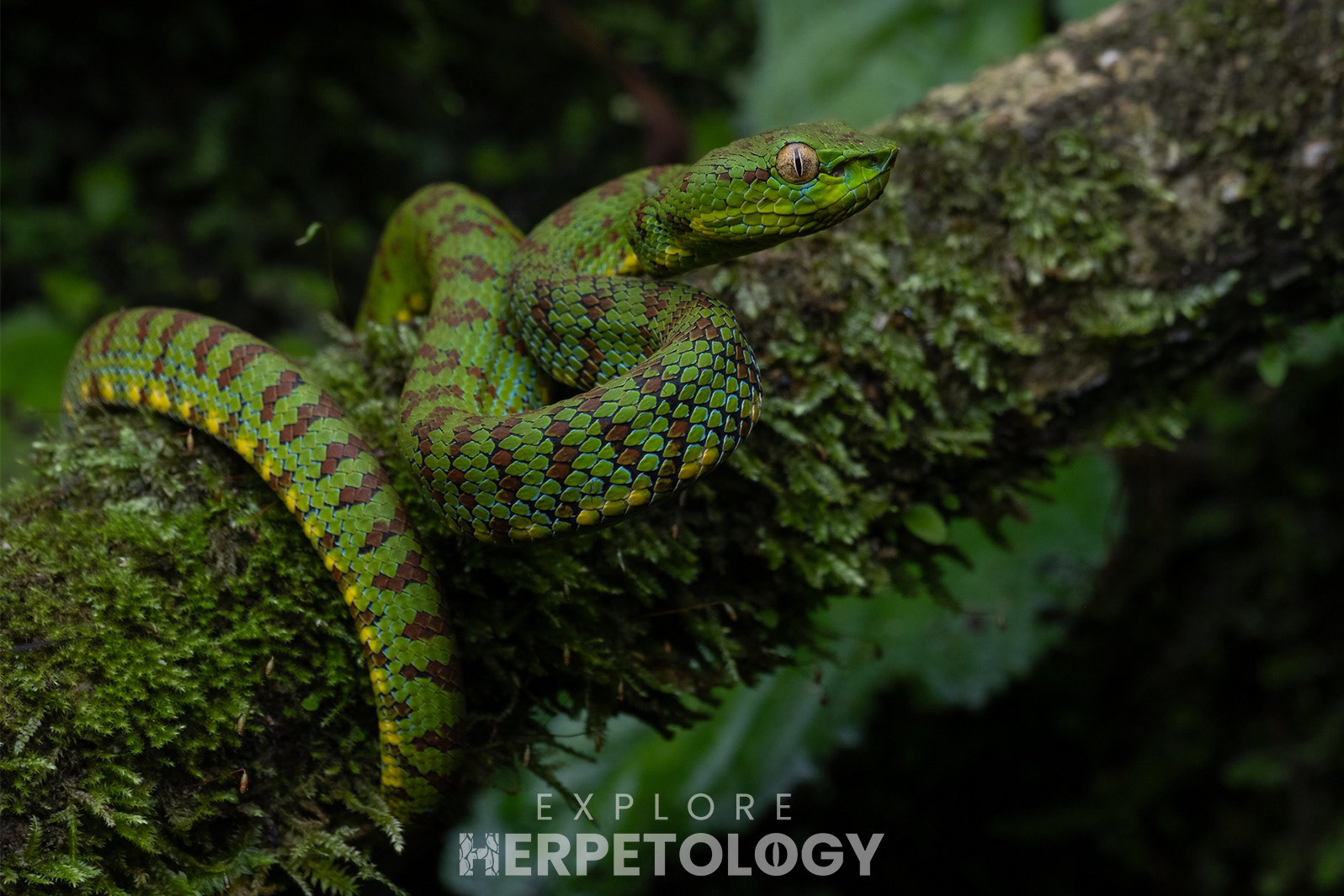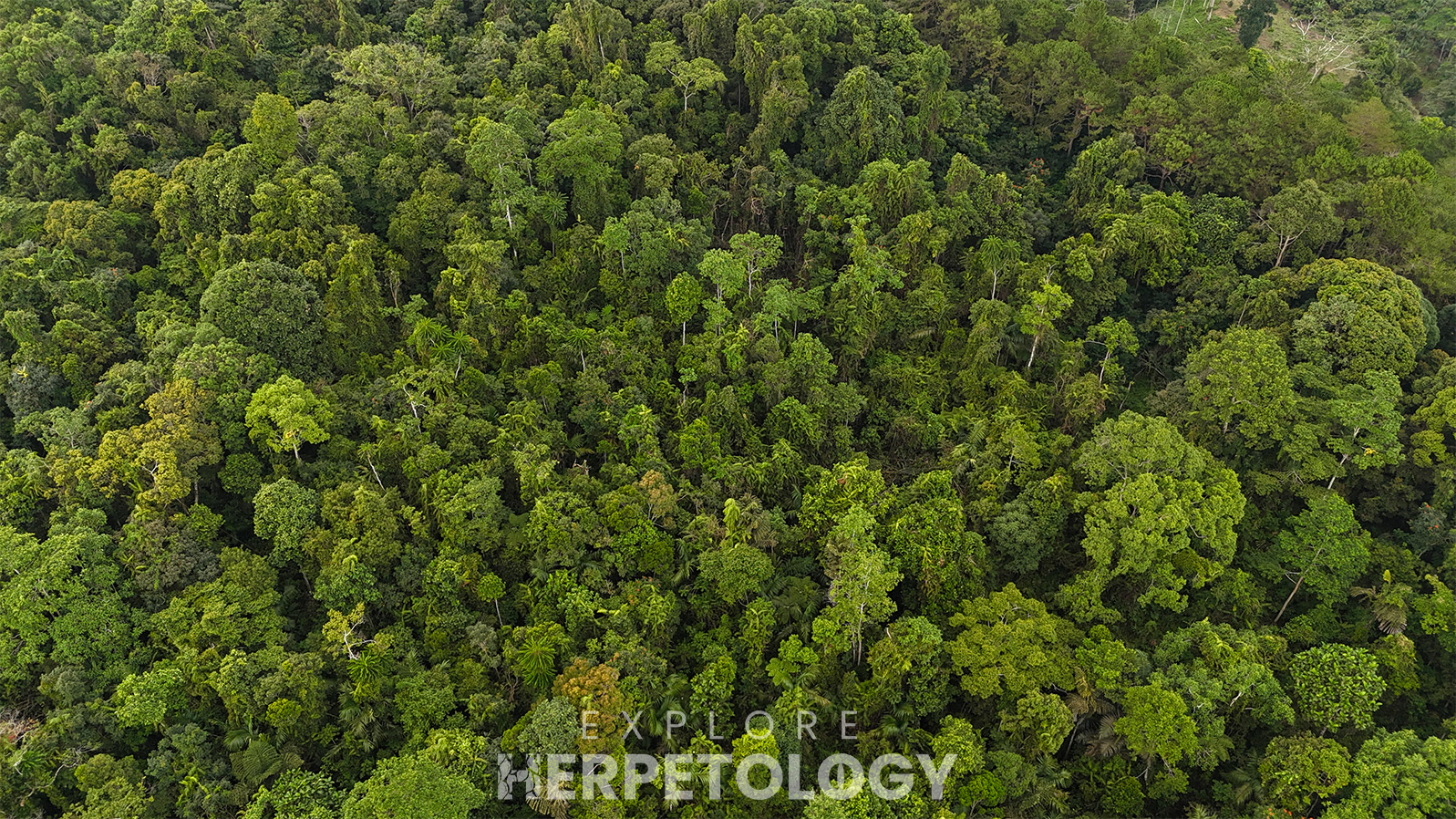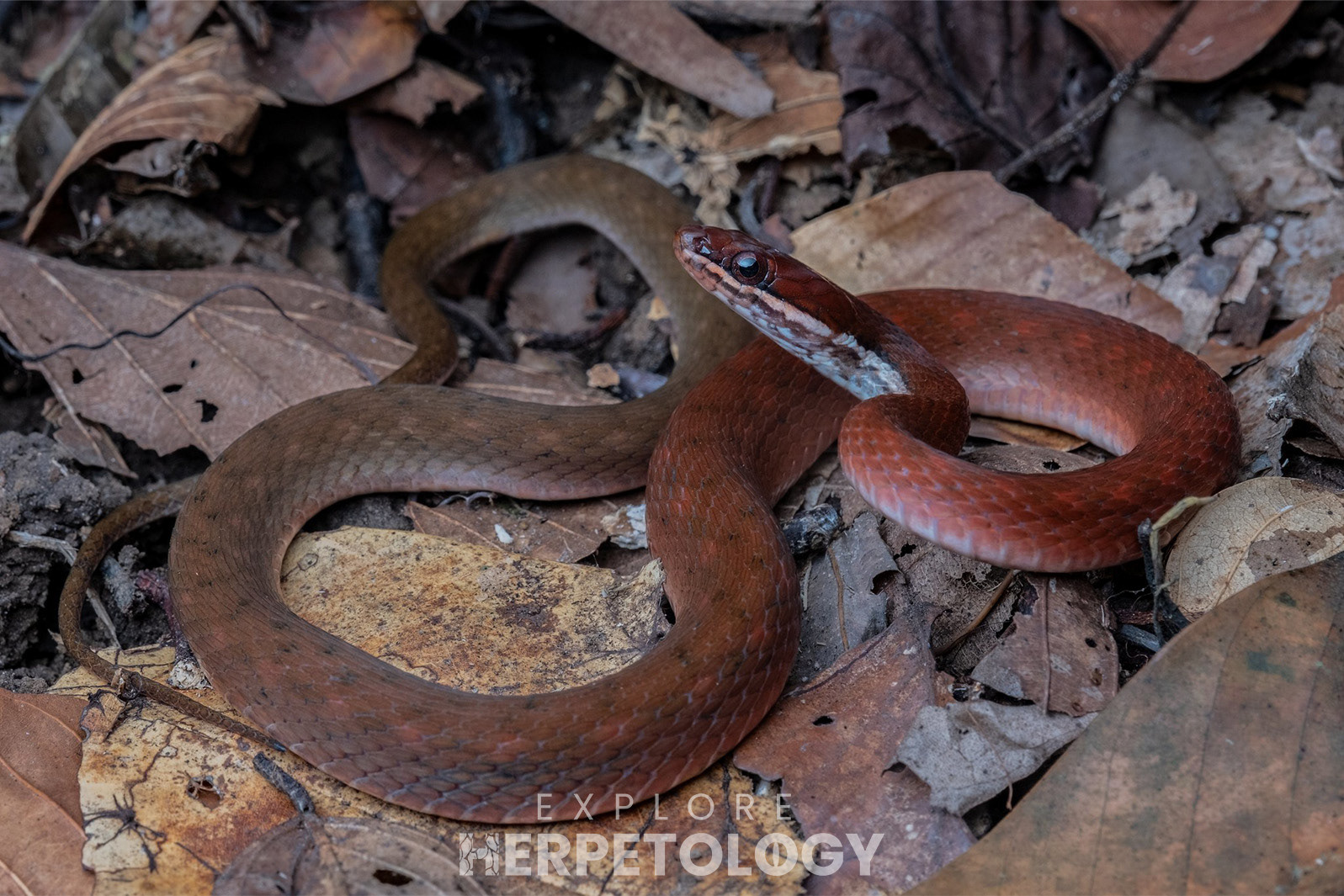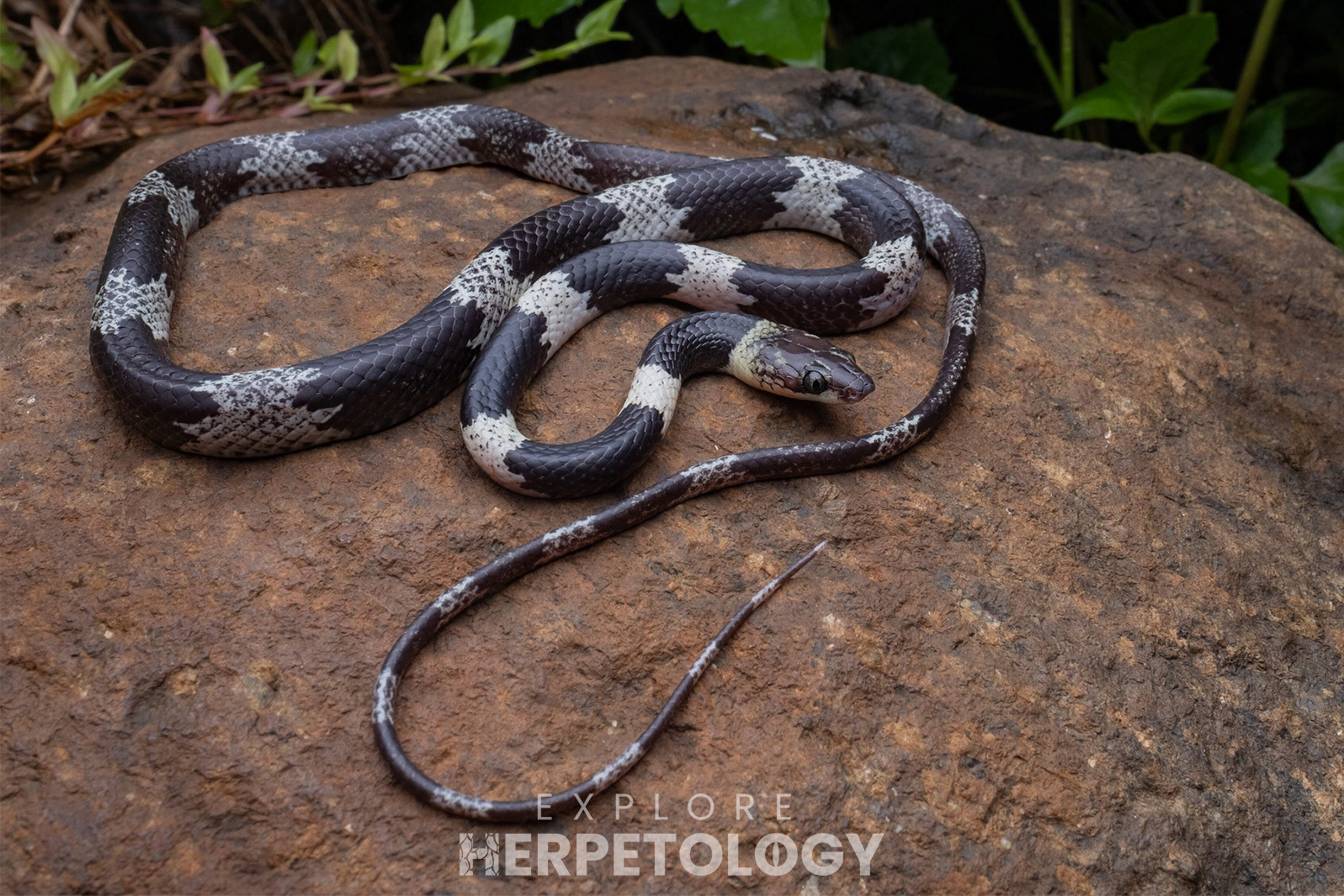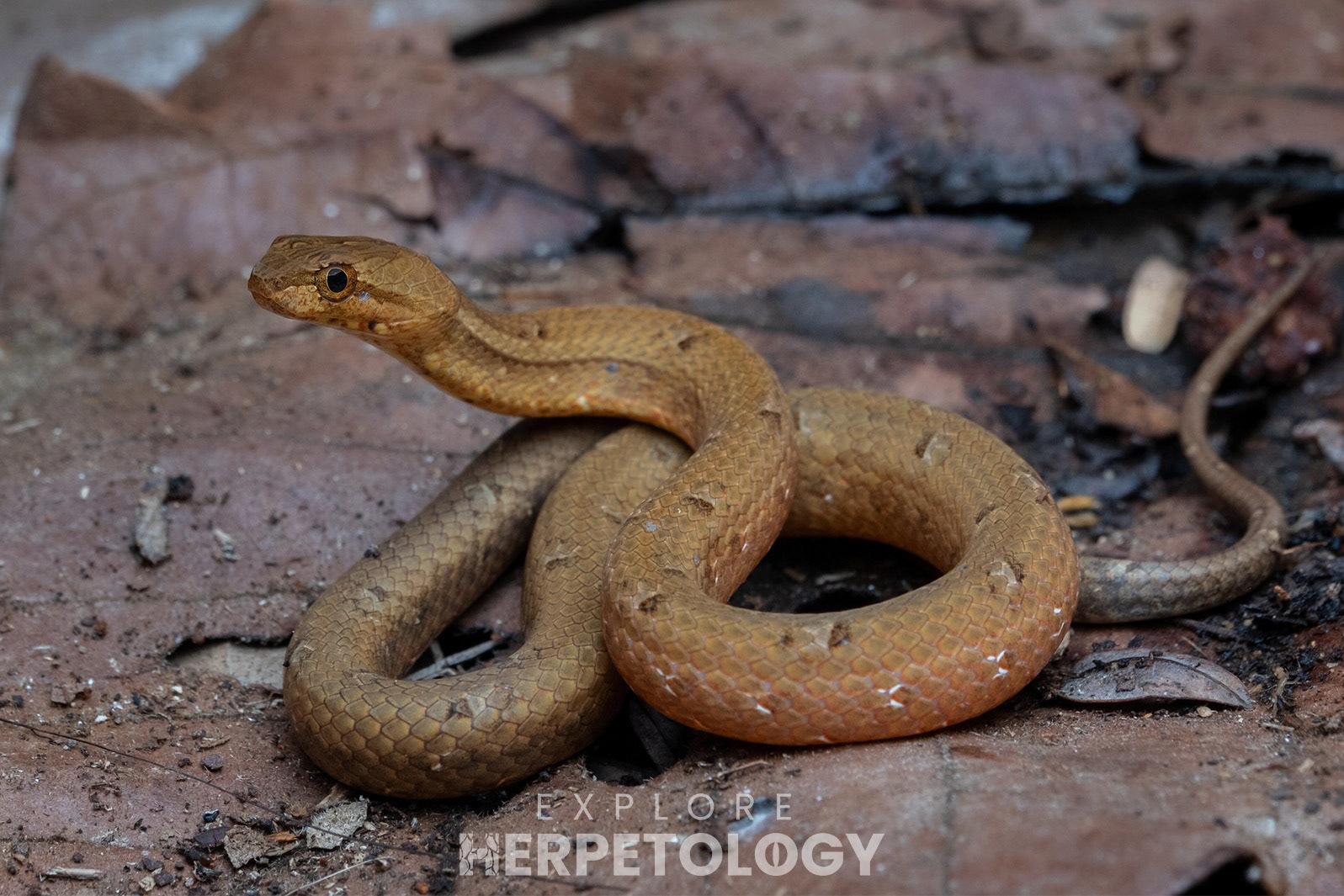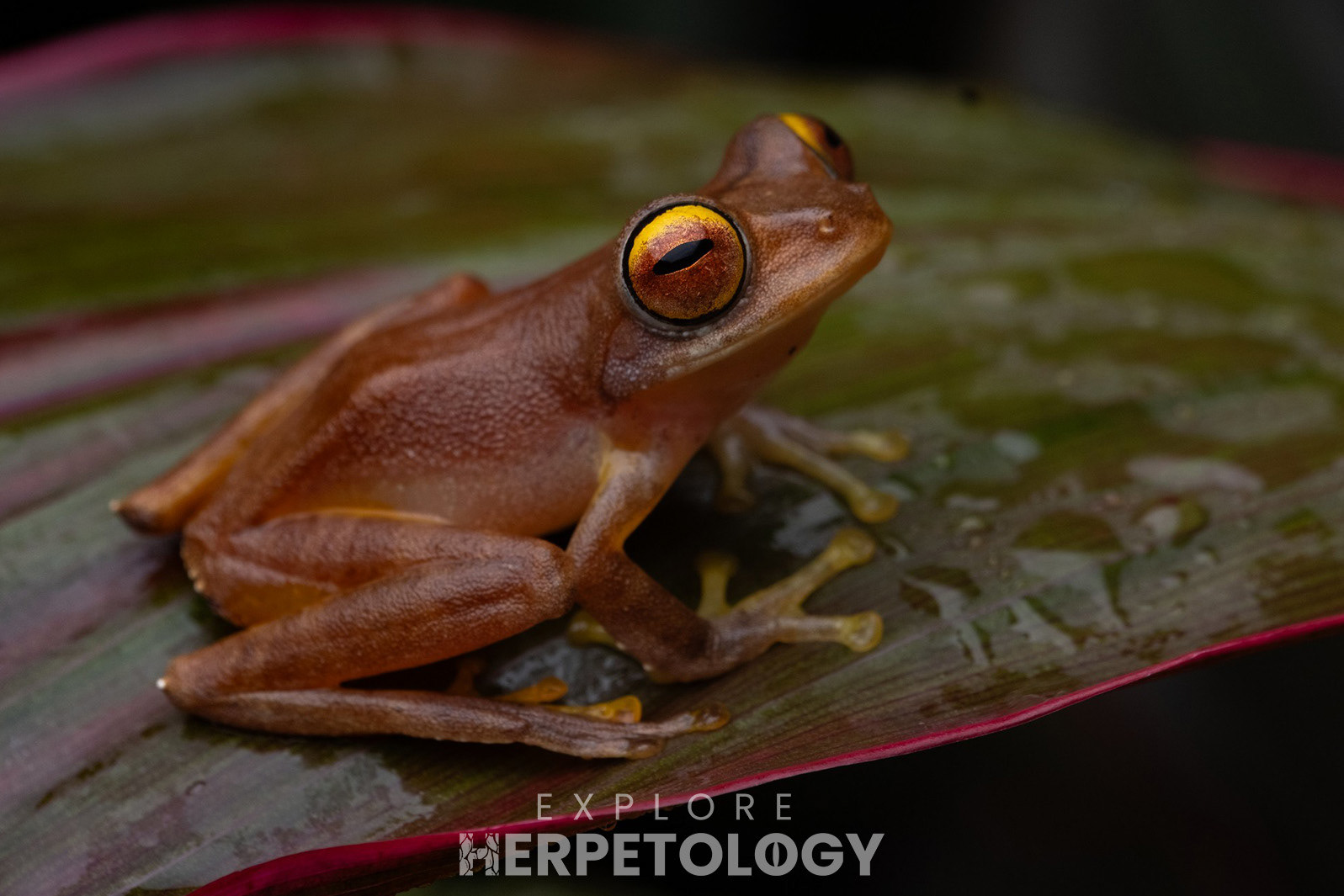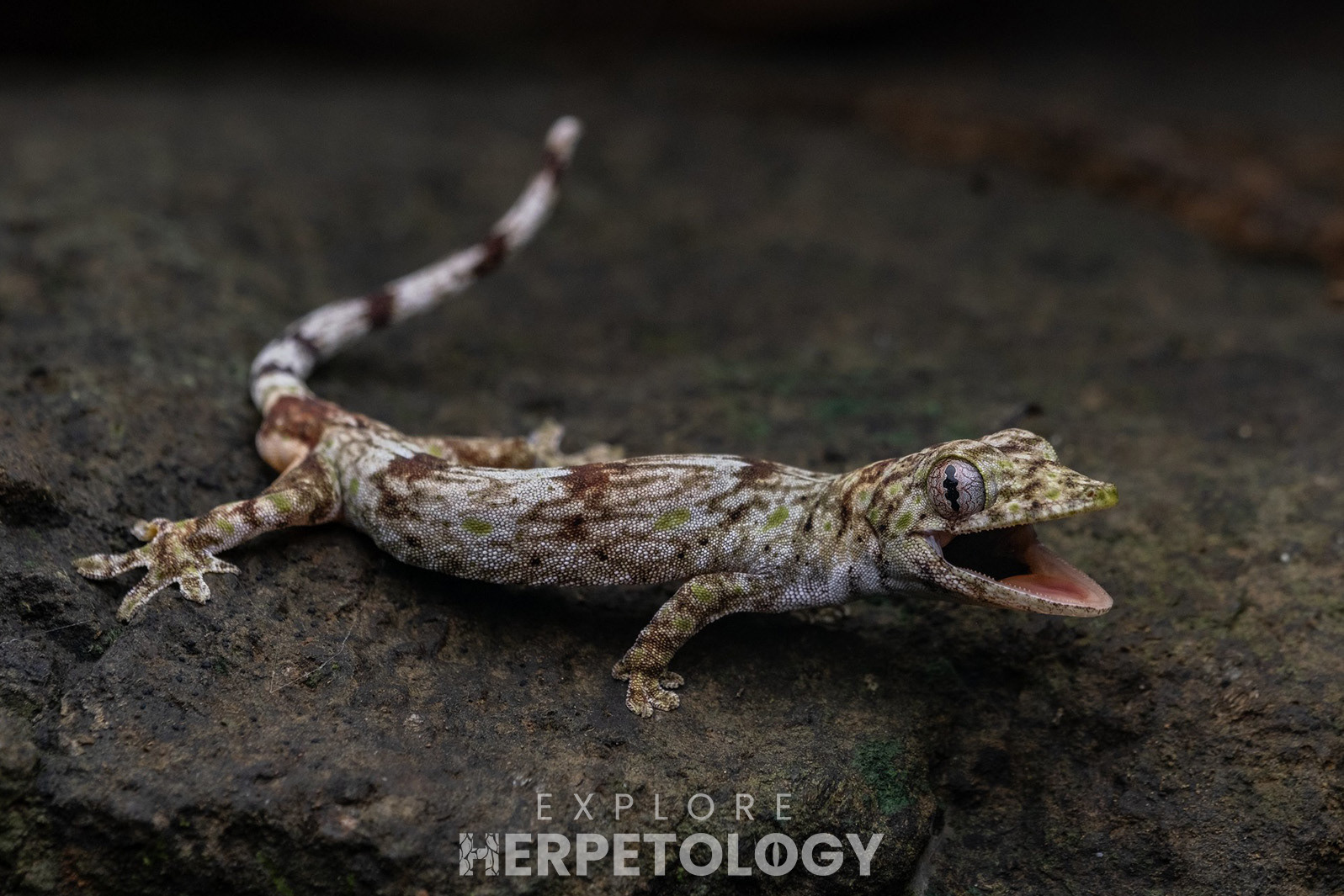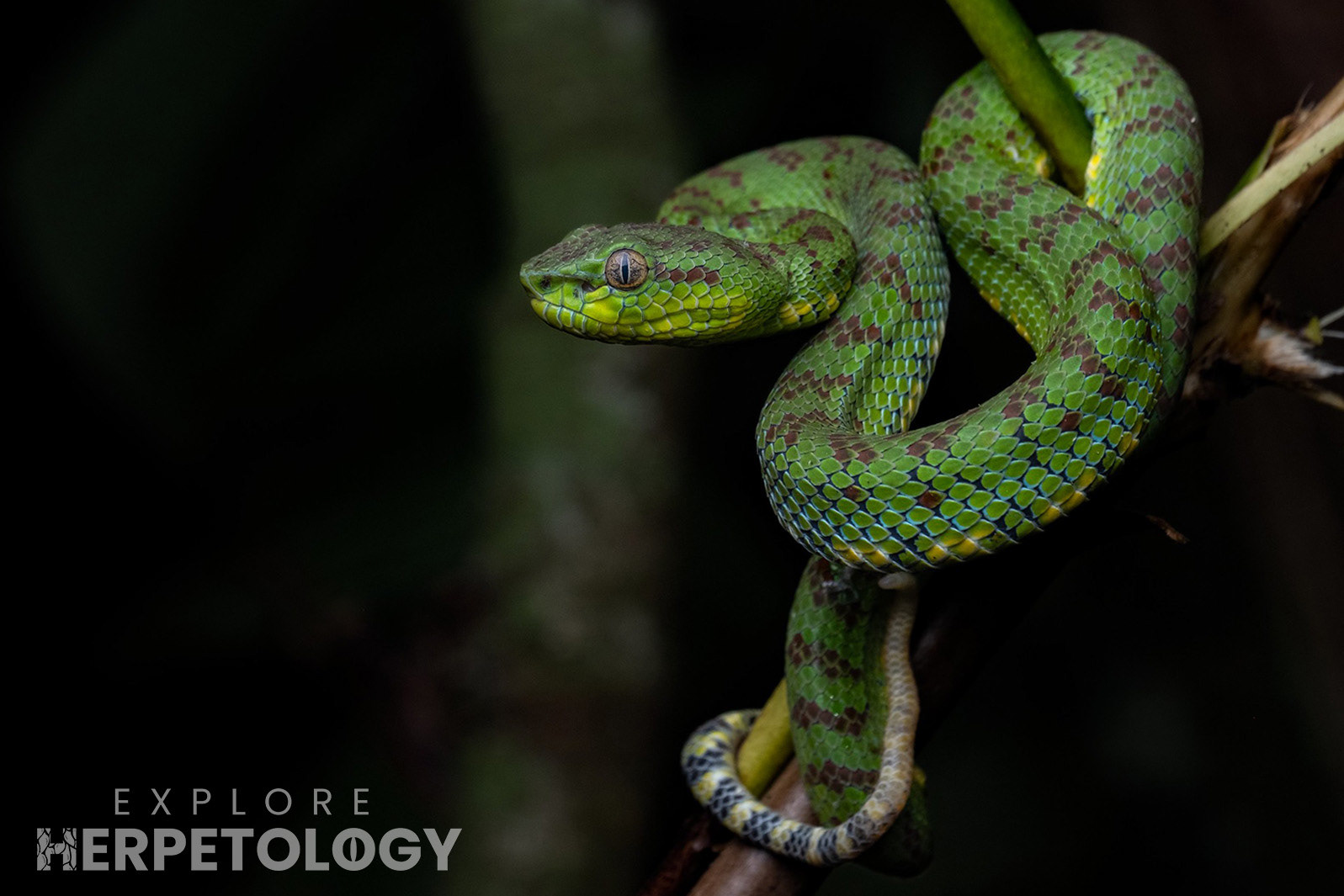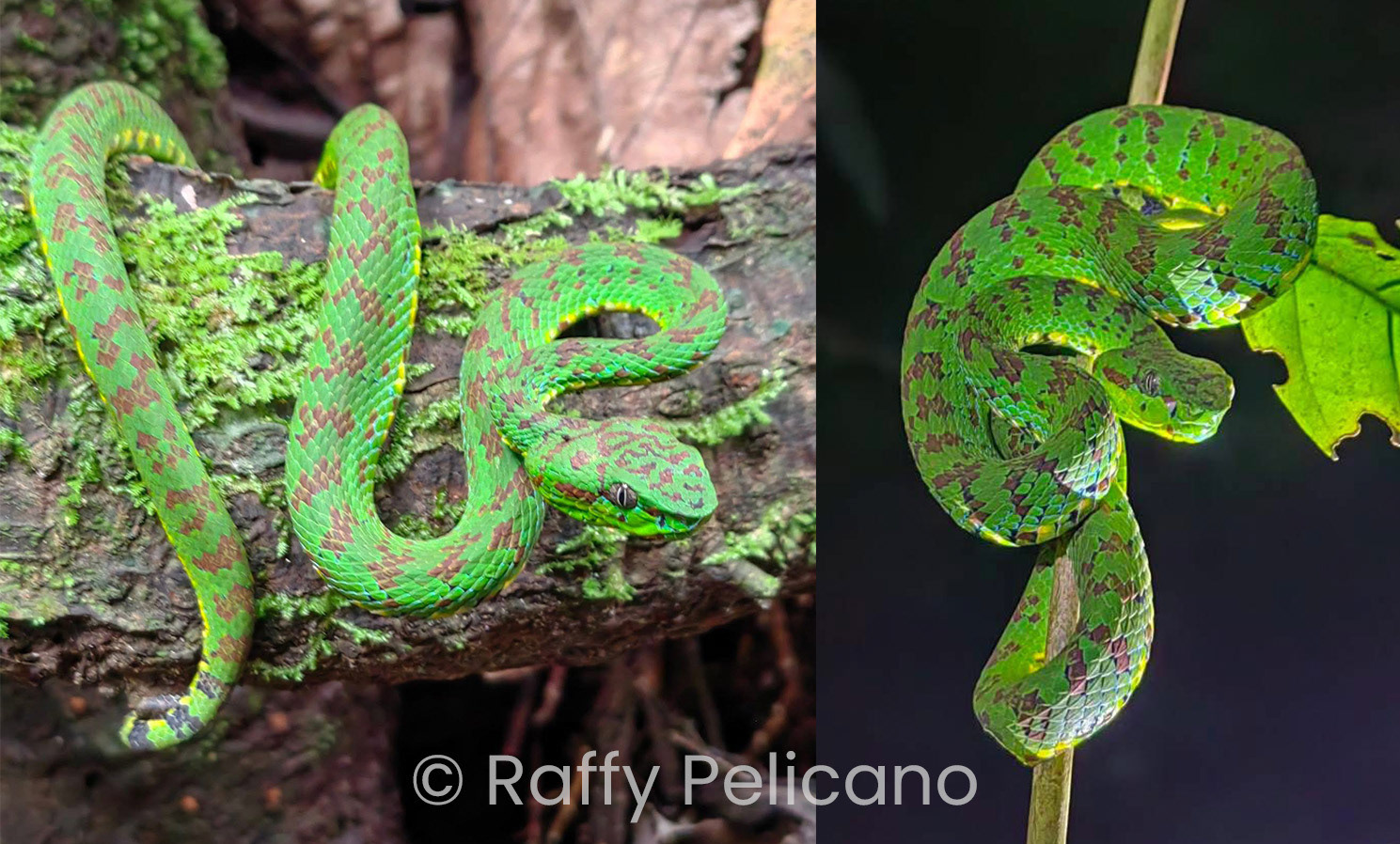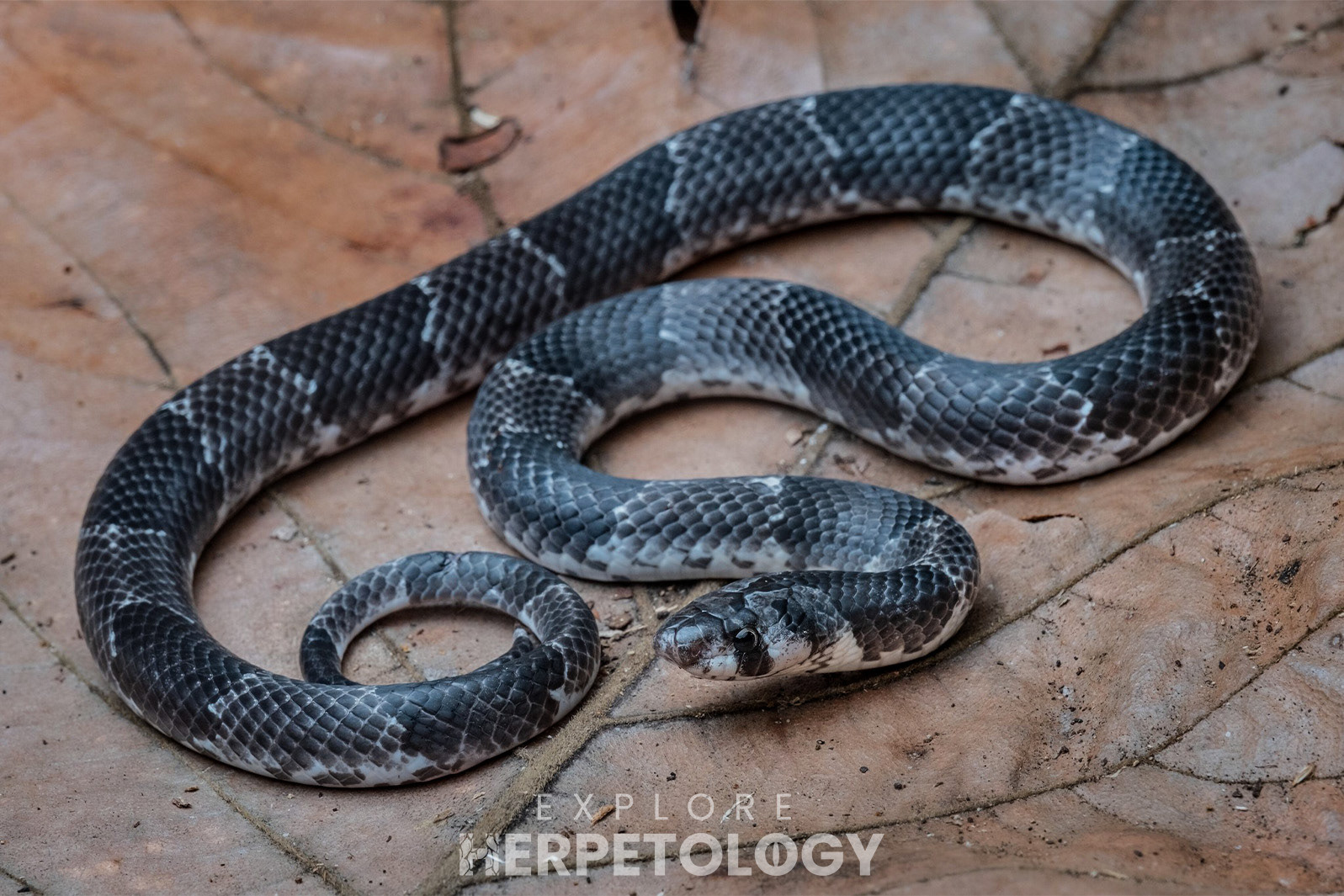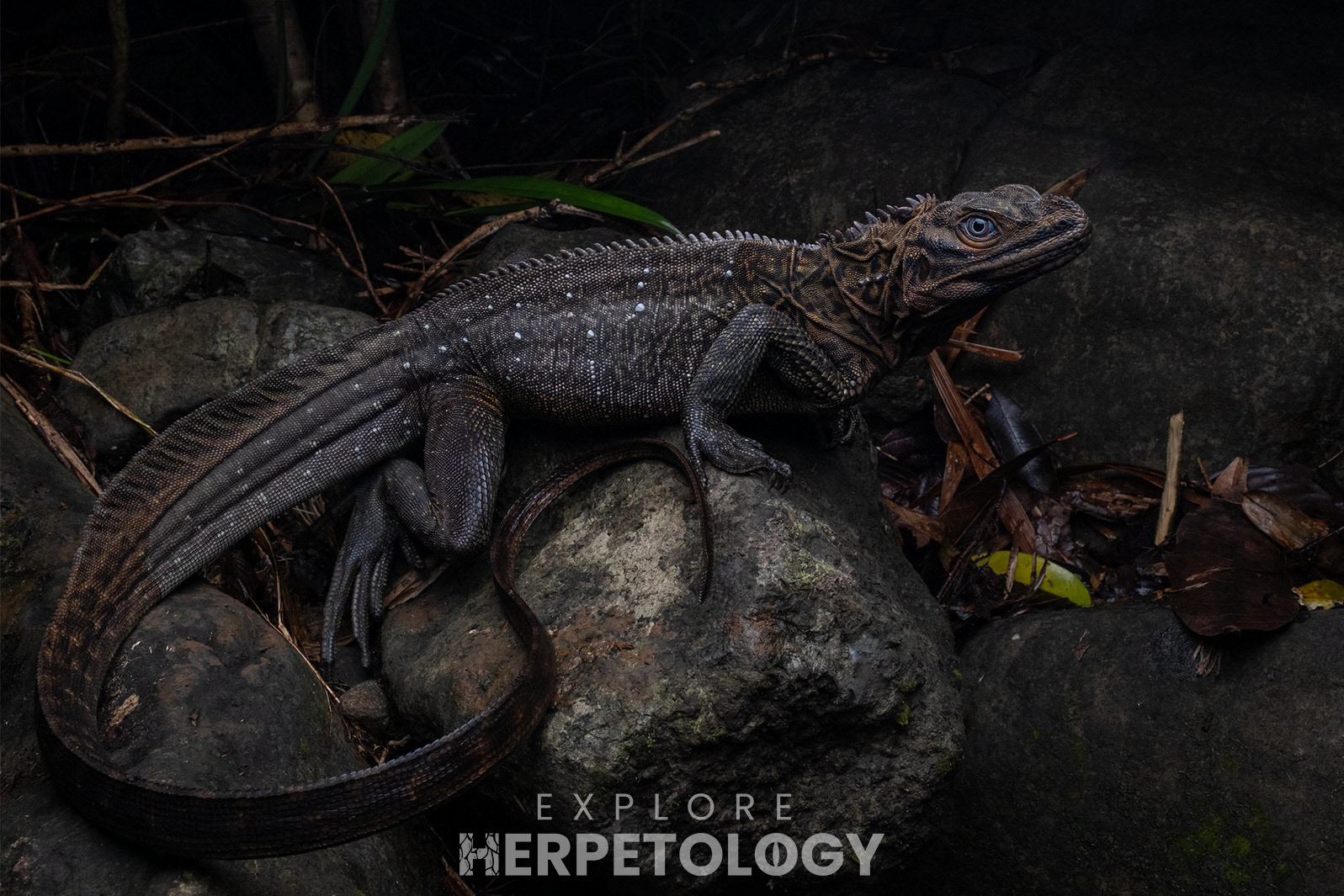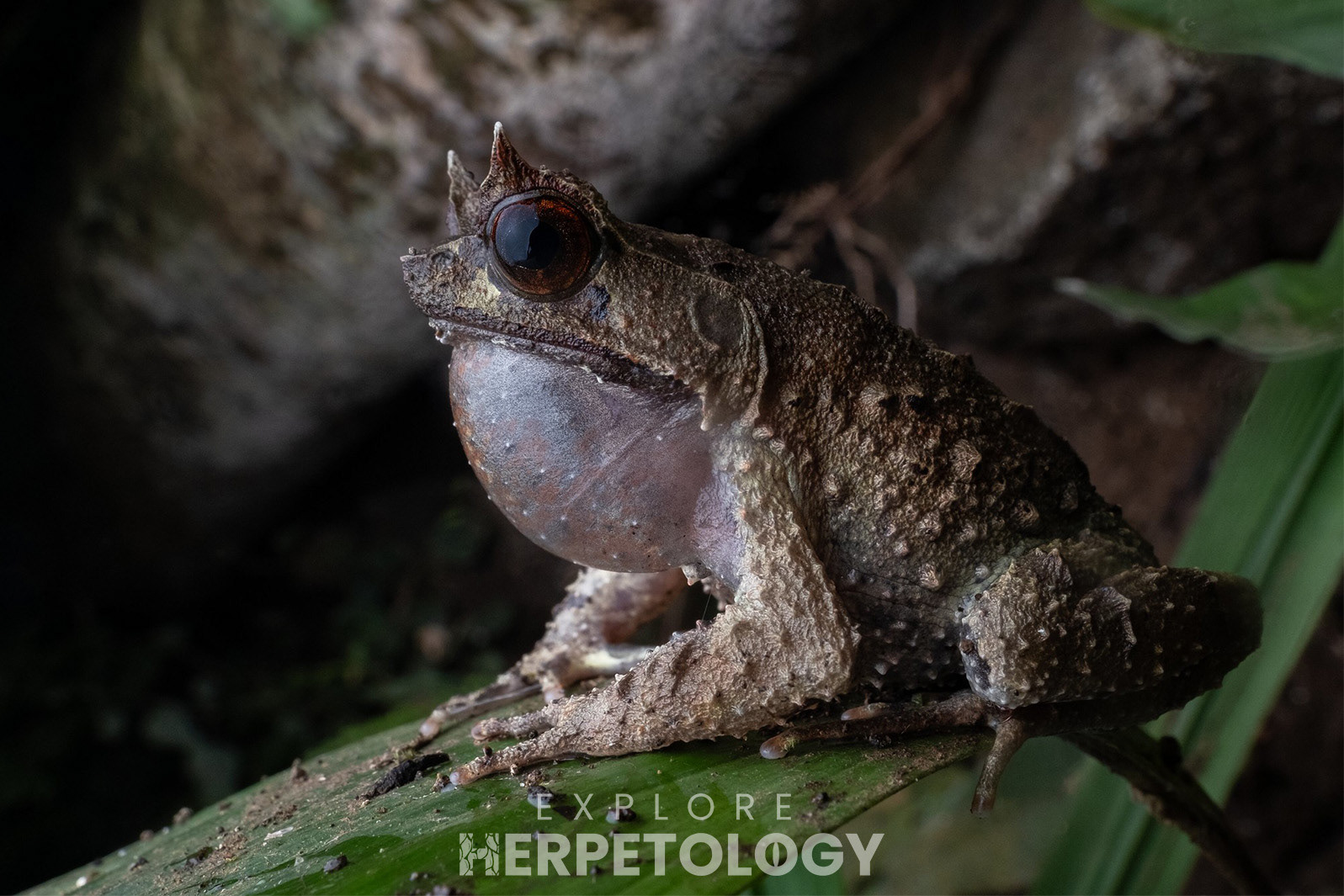We return to the mainland early on day 7, and drive from Davao City to Toril, a district west of the city comprising mostly of highlands up to 1,200 meters. These highlands will be the focus of our first 2 days in the area, as this is home to the Mindanao clade of the Philippine pit viper (Trimeresurus cf. flavomaculatus), often referred to as Trimeresurus schadenbergi. This distinctive morph is much rarer than the typical Trimeresurus flavomaculatus found across the more northern islands in The Philippines, so we will make sure we maximise our search effort here to find at least one individual. Males of this clade have broad red bands which encircle the body, but we have only seen females here in the past. This expedition, the goal is to find an adult male.
While in the highlands, we will get out for several daytime herping sessions where we can target diurnal species not possible at other locations on this expedition, such as the rare highland-endemic spotted water snake (Tropidonotus dendrophiops) and the slightly more common white-lined keelback (Rhabdophis auriculatus). At night, several other Mindanao-endemic snakes can be found here. The zig-zag lined keelback (Rhabdophis lineatus) is definitely the most common, but we will keep out eyes peeled for the Mindanao kukri snake (Oligodon maculatus) and Dumeril's wolf snake (Lycodon dumerilii) - both extremely uncommon species. Other snakes such as the mock viper (Psammodynastes cf. pulverulentus), Gervais' reed snake (Calamaria gervaisii) and blunt-headed slug snake (Aplopeltura boa) occur in the area. It is also possible to find king cobra (Ophiophagus sp.) in the highlands.
Unlike the previous two locations, the damp forests of Toril are also good for frogs. Our team have seen the Mindanao horned frog (Pelobatrachus stejnegeri), Mindanao sticky frog (Kalophrynus sinensis), local clade of Saffron-bellied frog (Chaperina cf. fusca), Asiatic tree frog (Leptomantis bimaculatus) and smooth-skinned shurb frog (Philautus worcesteri) to name a few. The best lizard in the area is the banded supple skink (Sphenomorphus fasciatus), a big target for this expedition.
On our final day, we will visit a river near Toril where there is a remnant population of Philippine sailfin dragon (Hydrosaurus pustulatus). We will try to spot these basking during the daytime. If we are unsuccessful, we can return at night and search for them sleeping. This area has a lot of snakes, especially North-Philippine temple viper (Tropidolaemus philippensis) and Philippine shrub snake (Oxyrabdium modestum). The following day, we will drive back to Davao city where the expedition will end.
